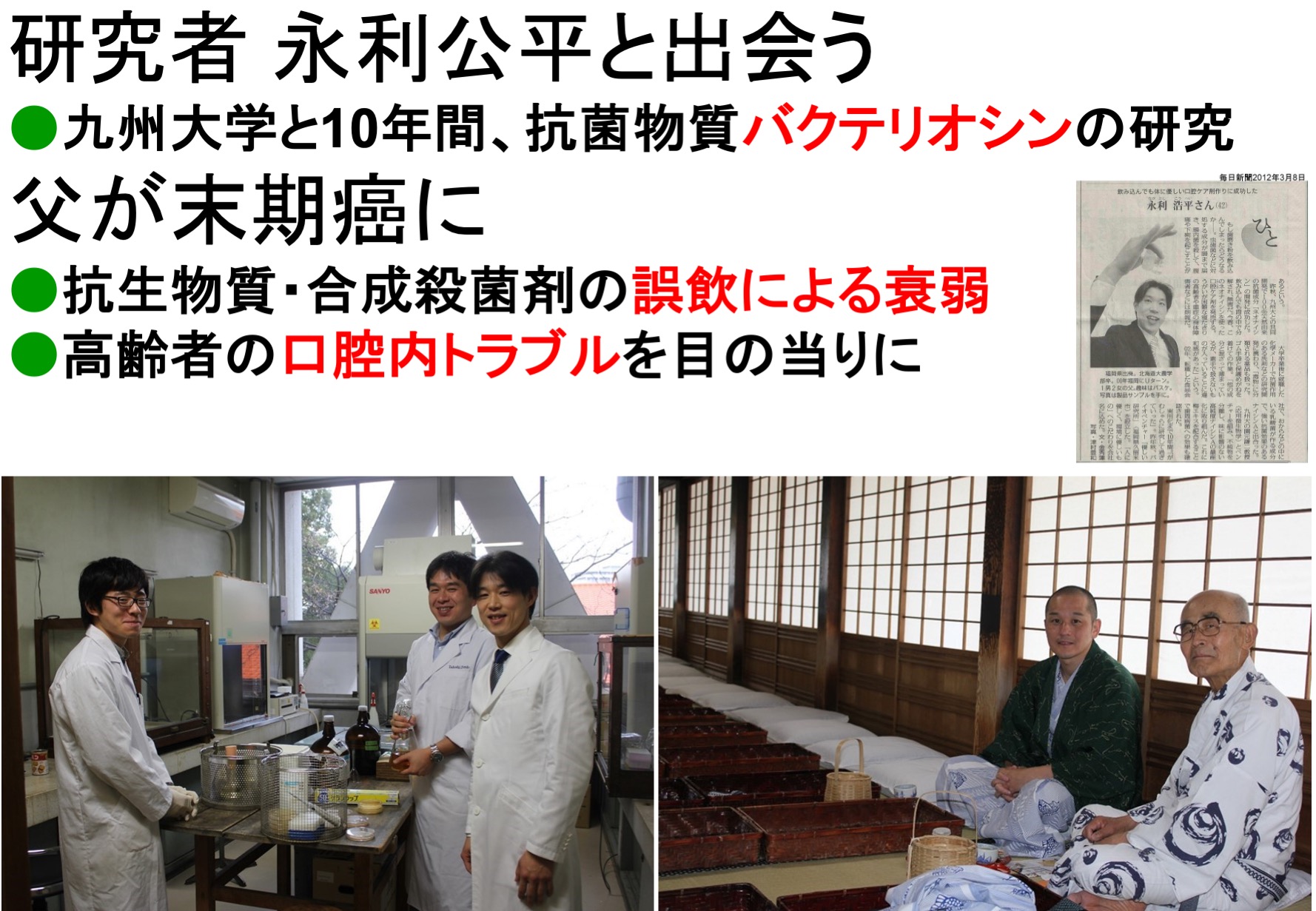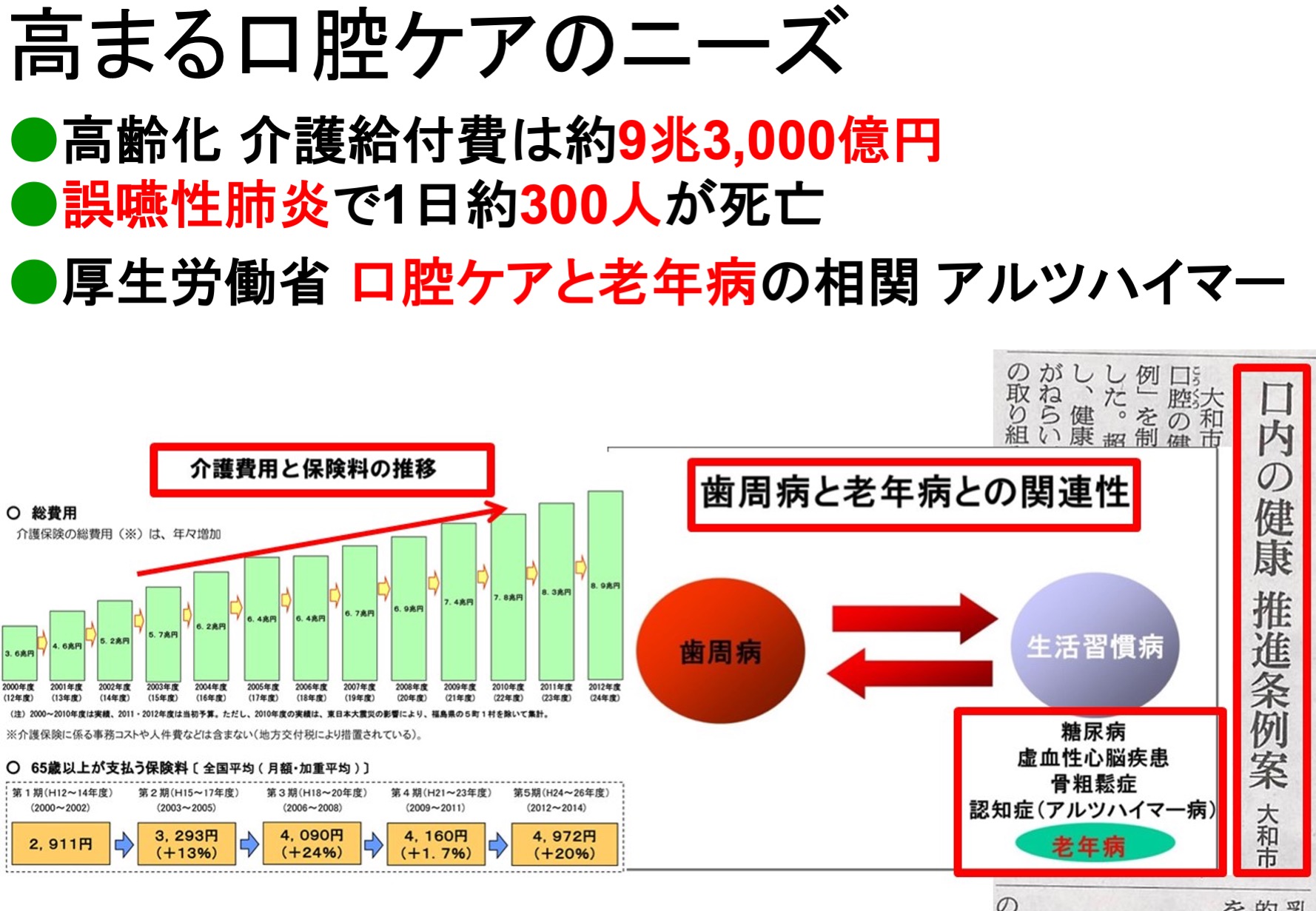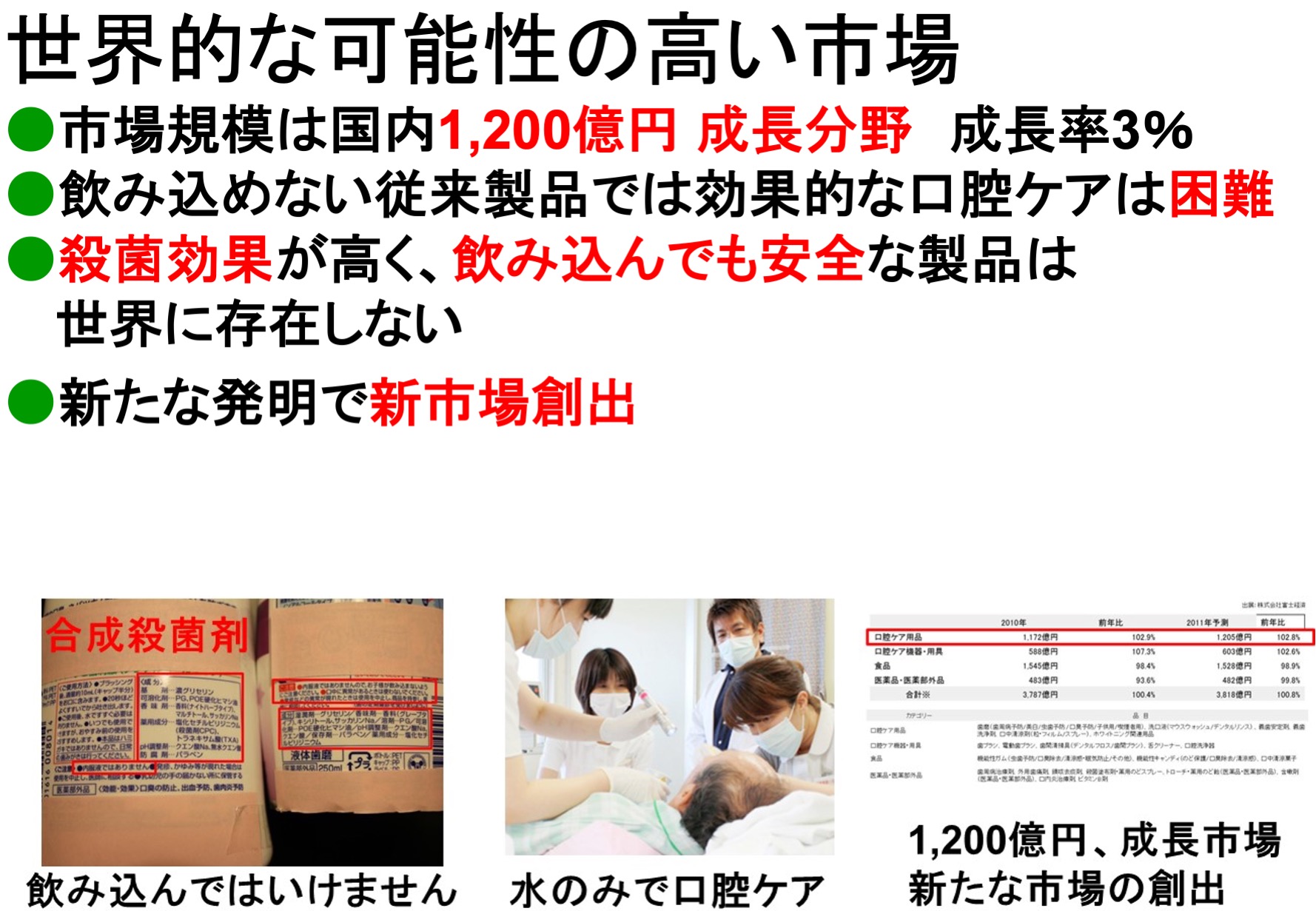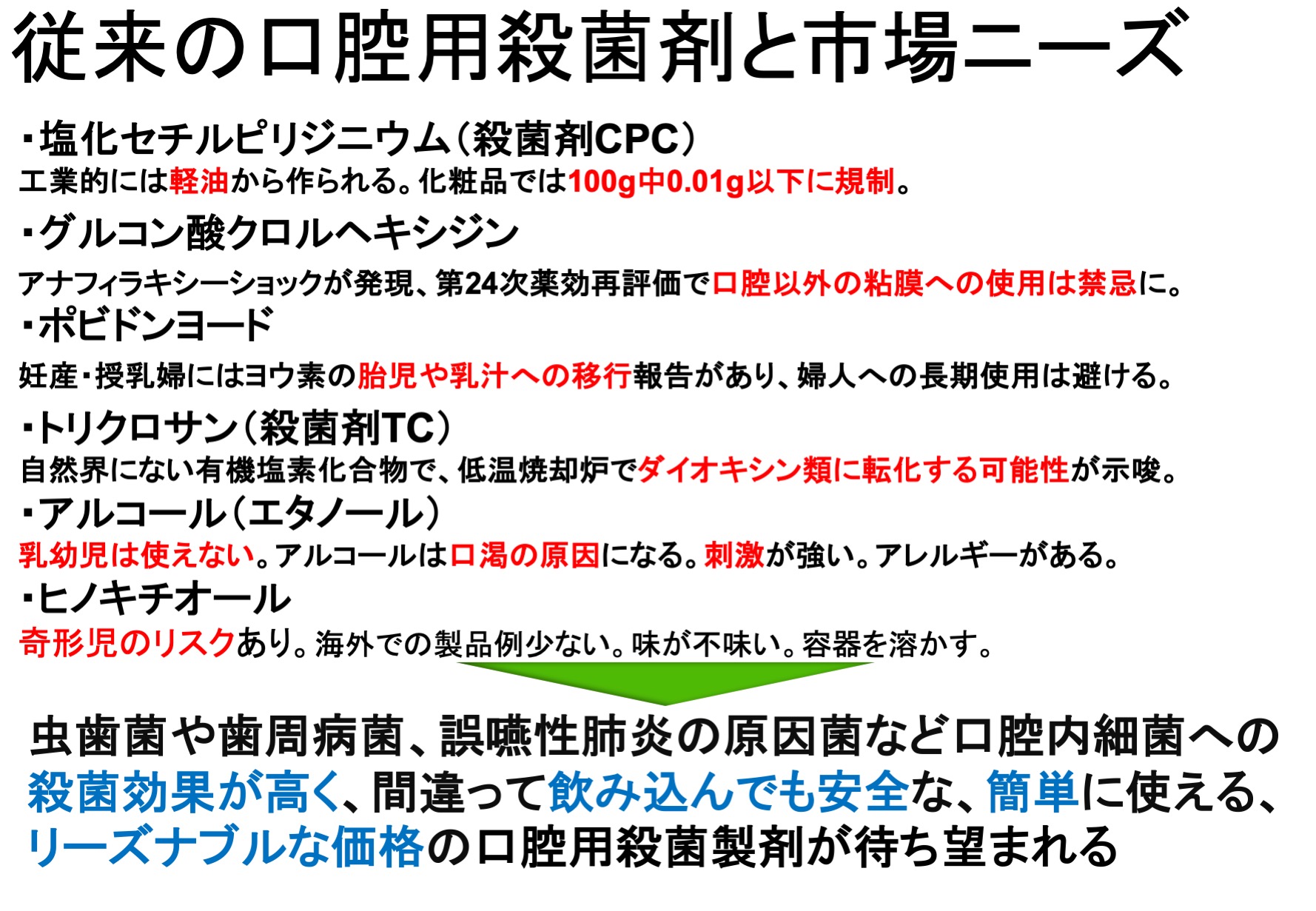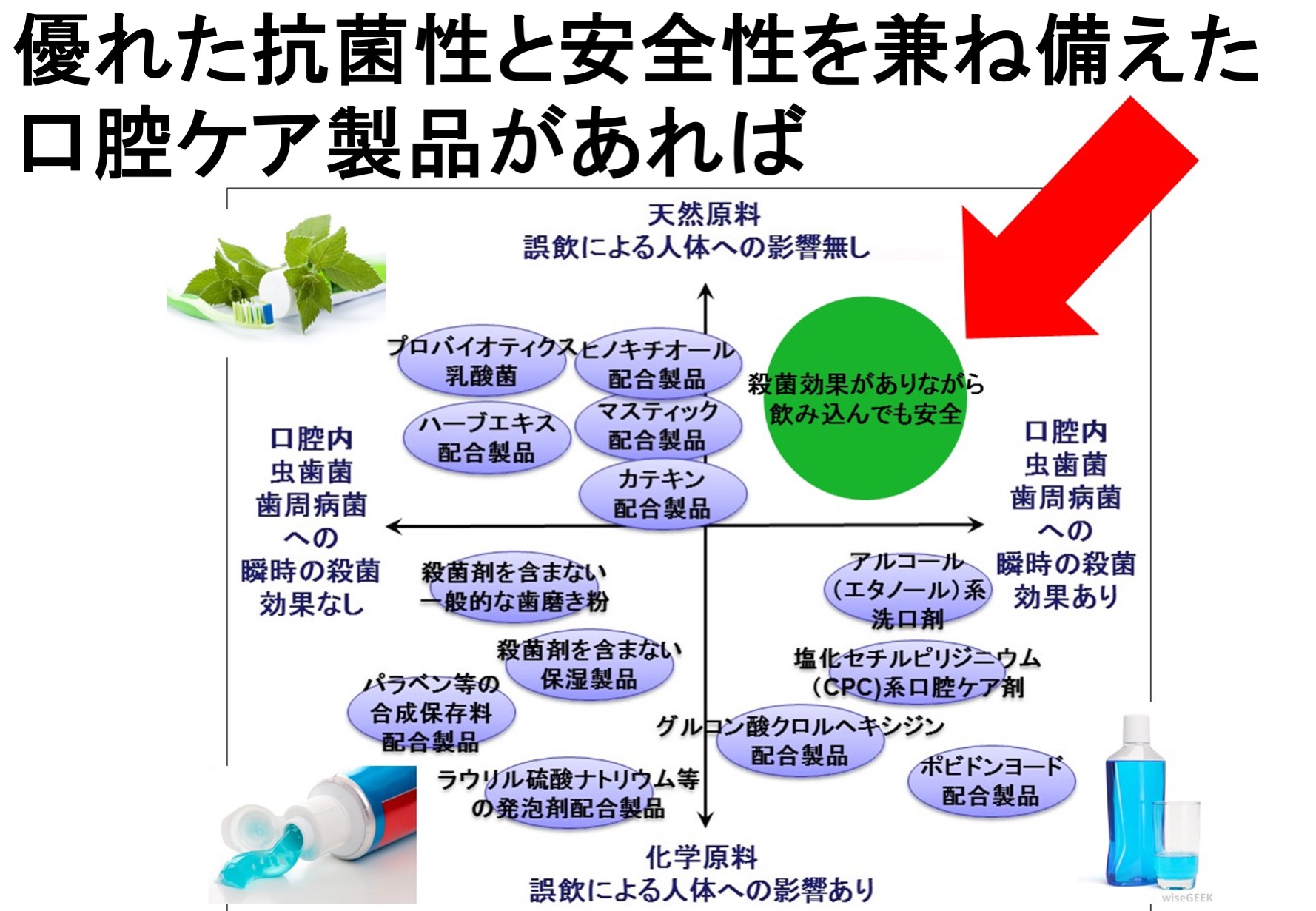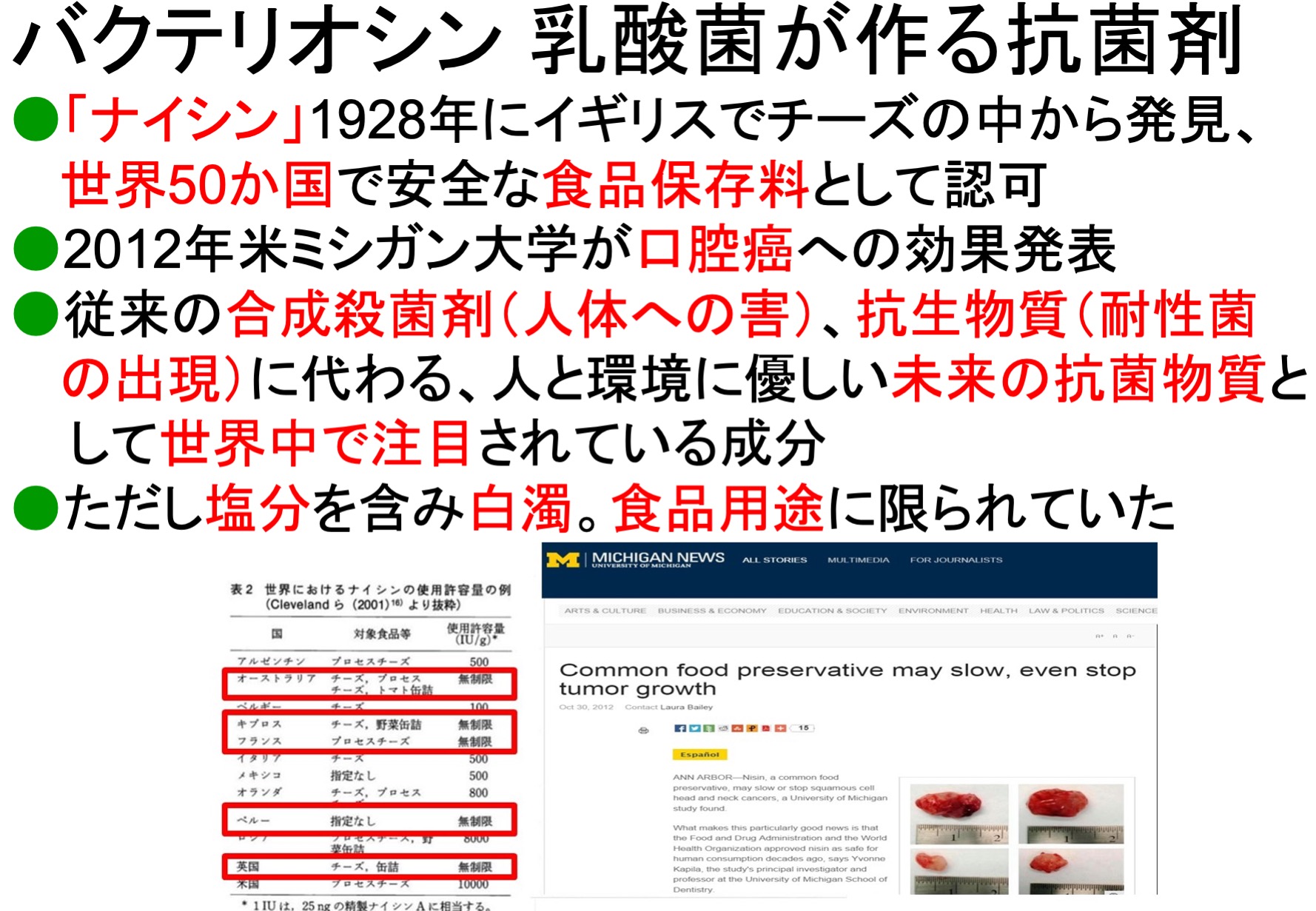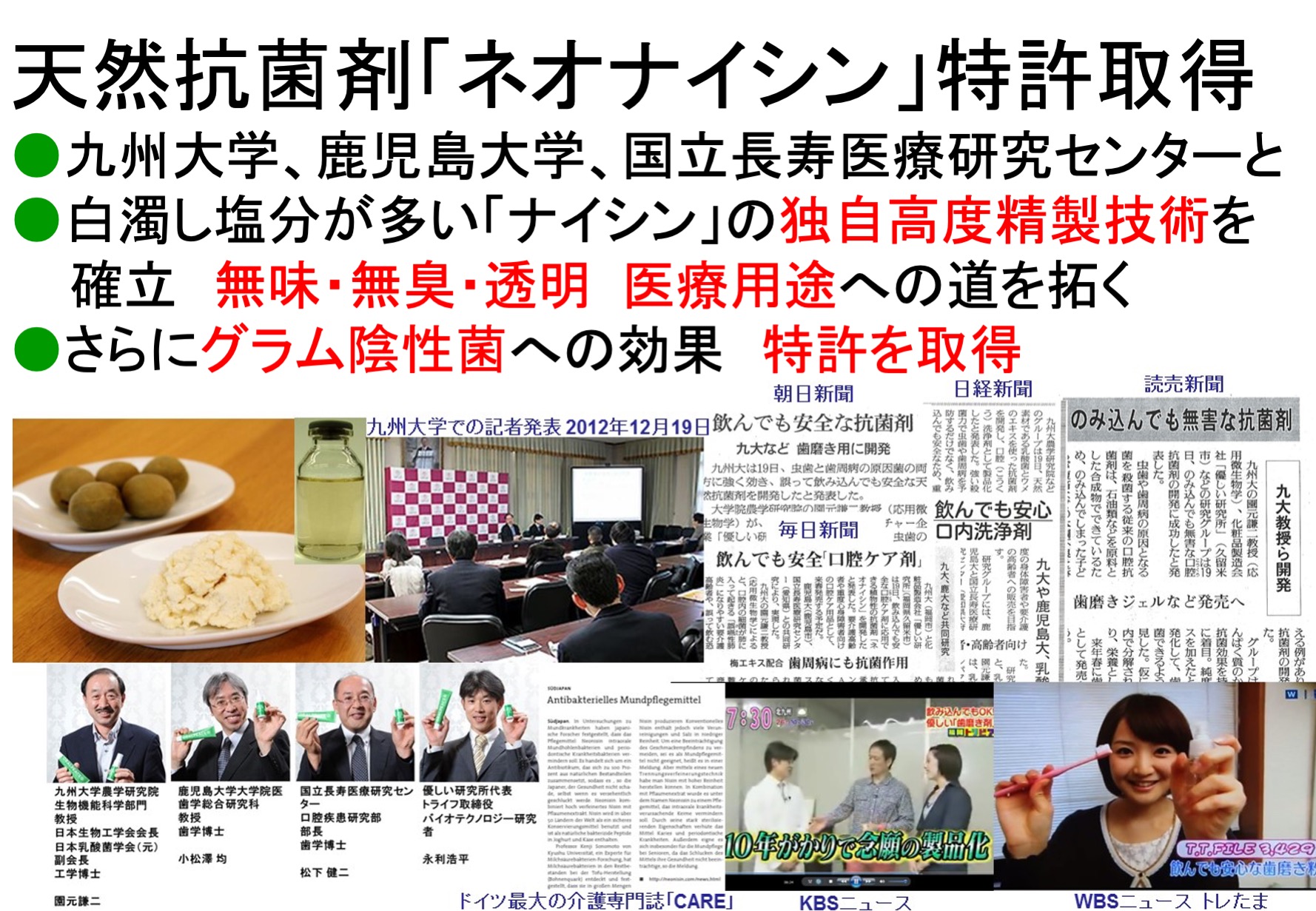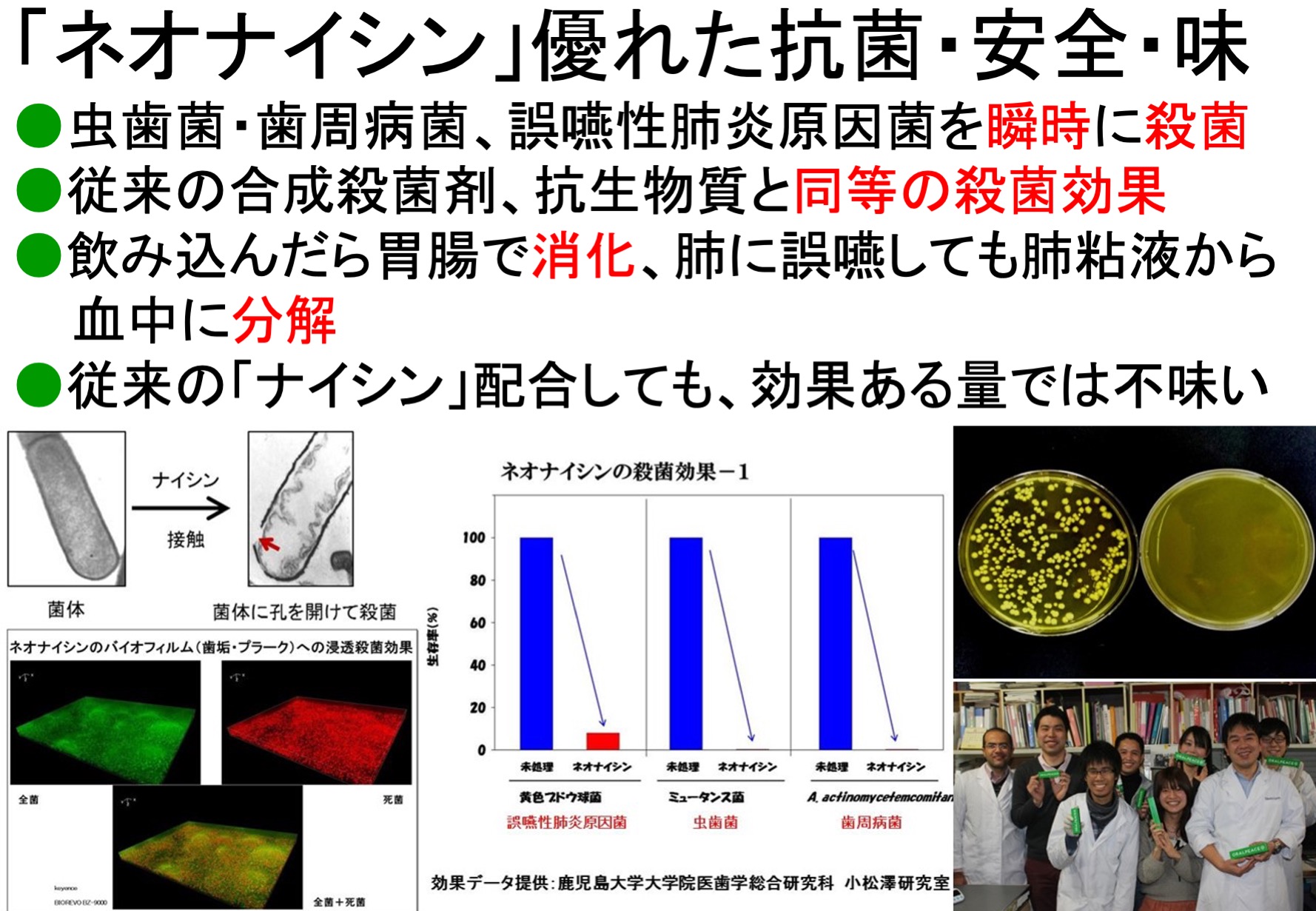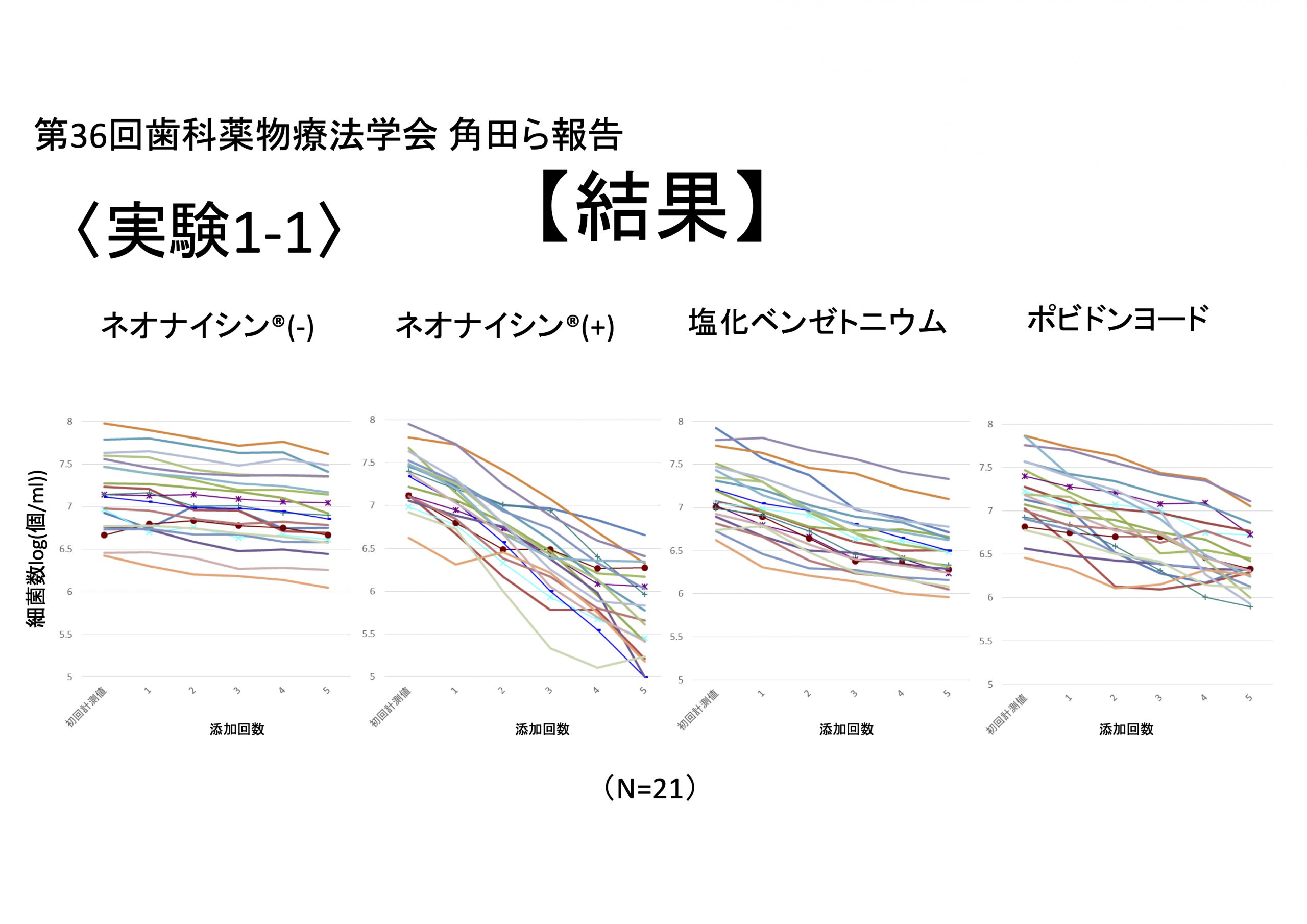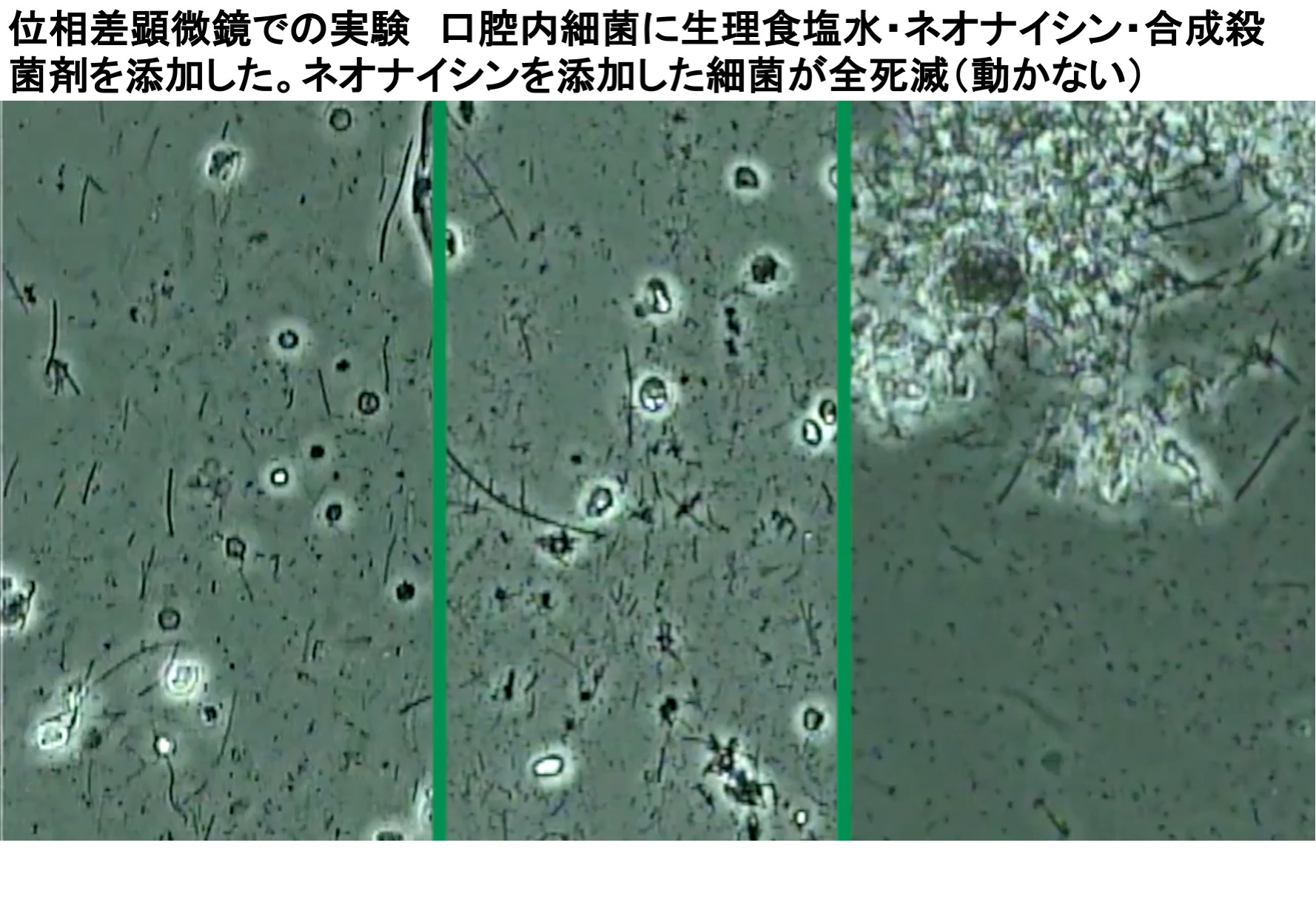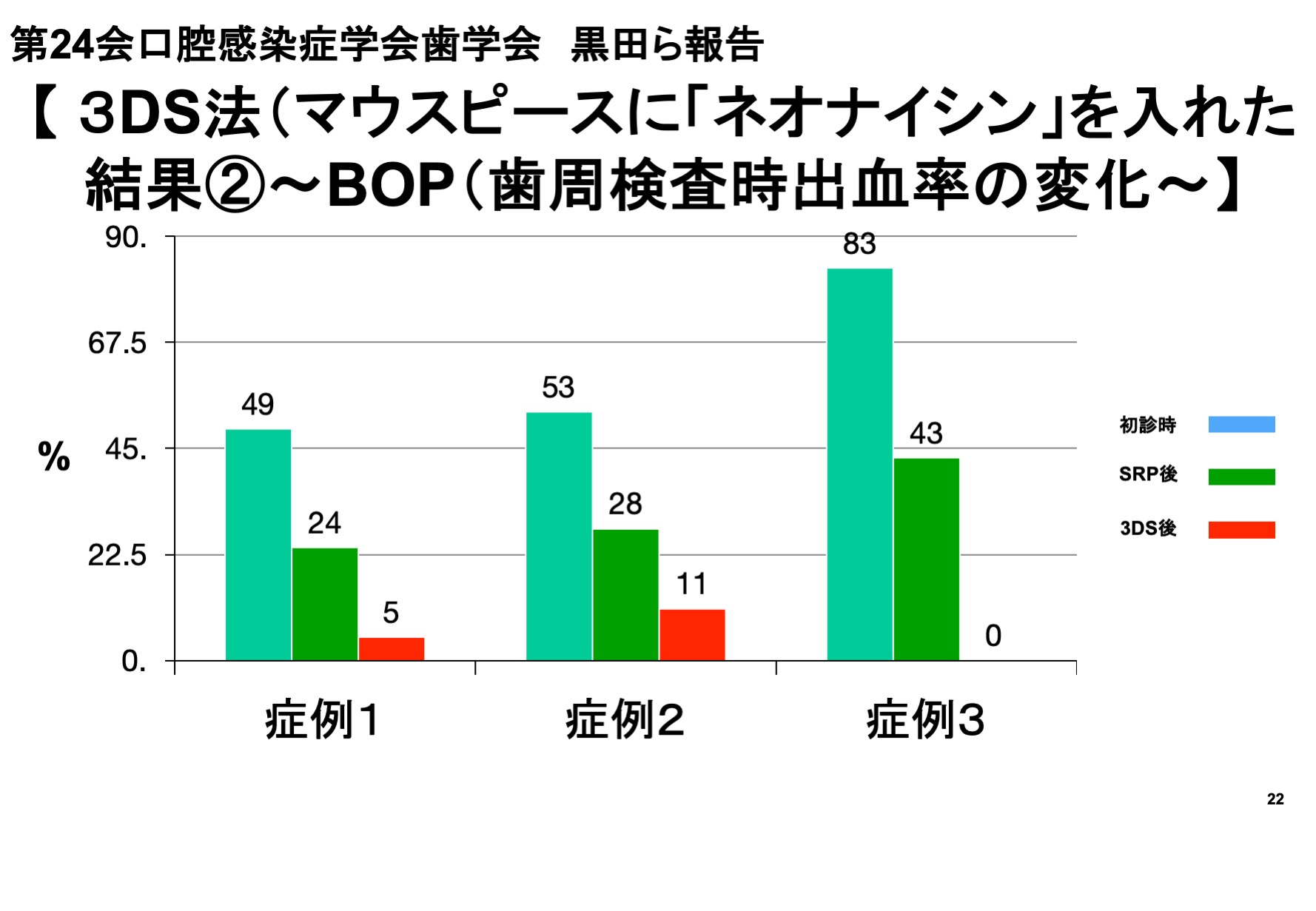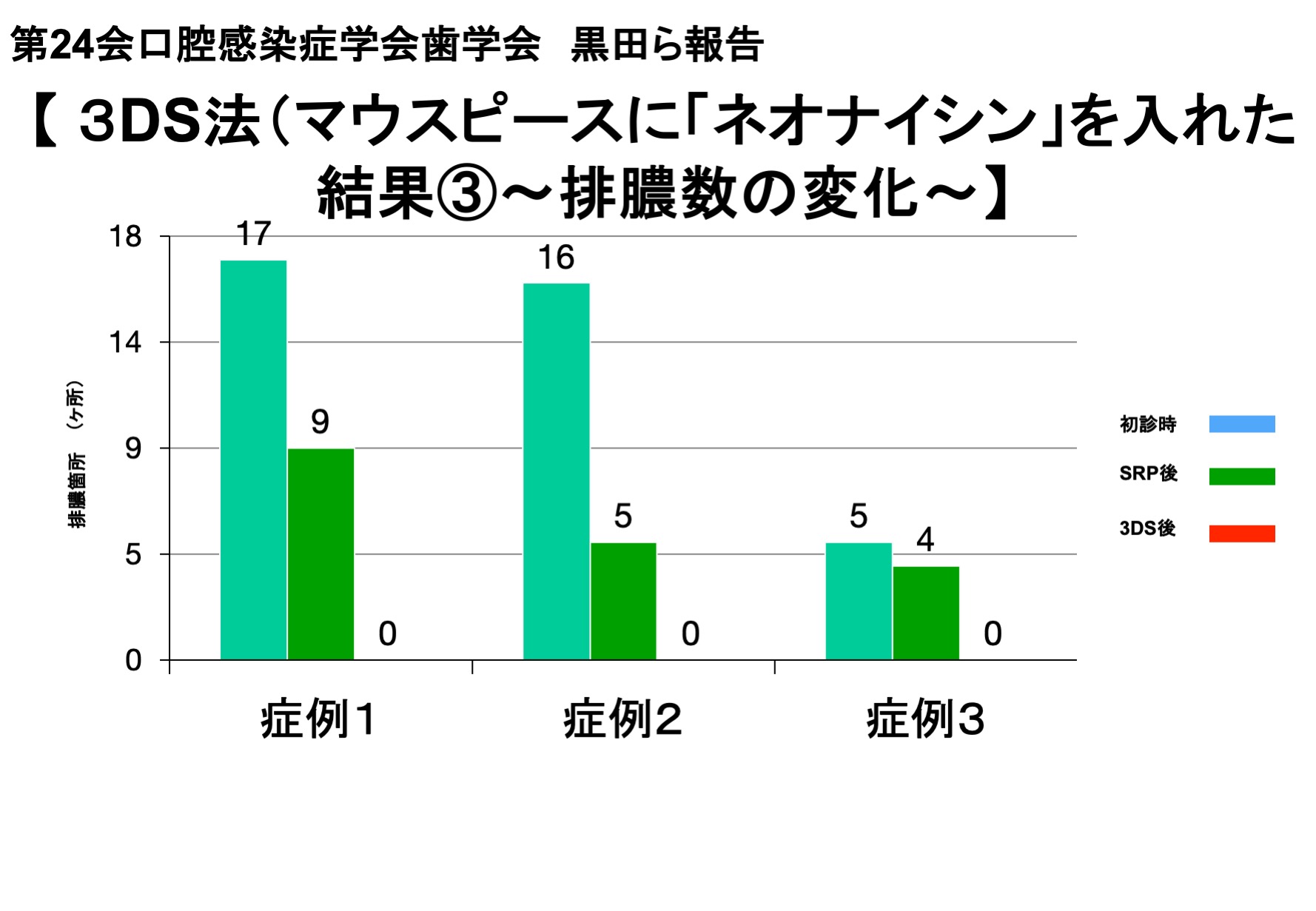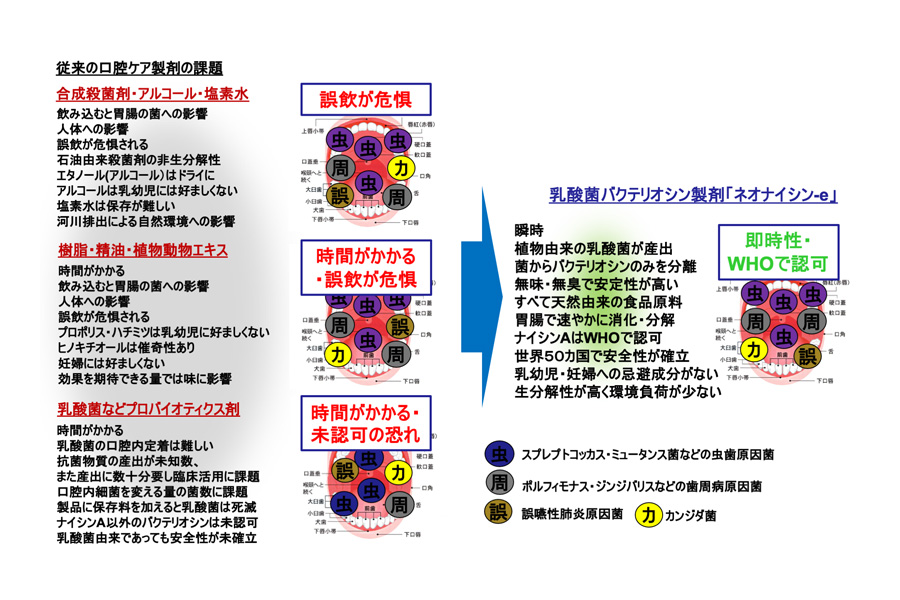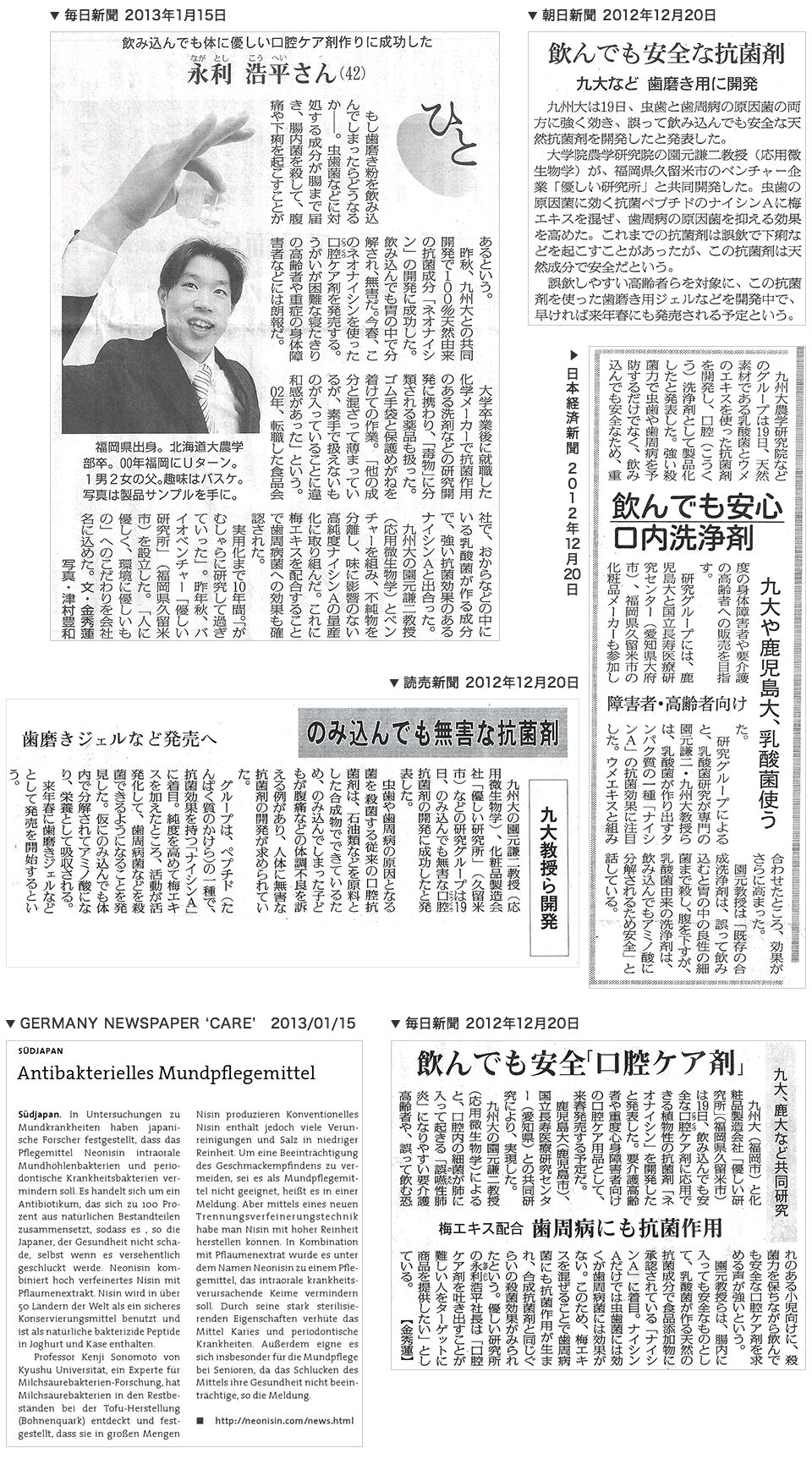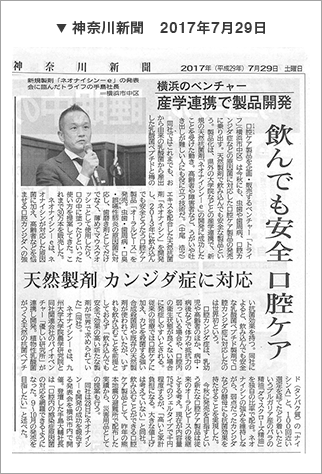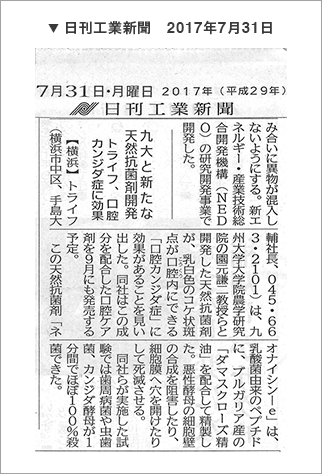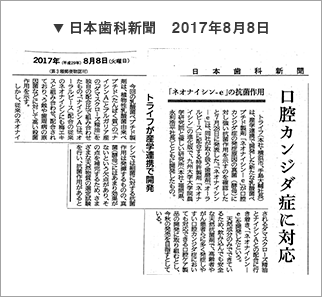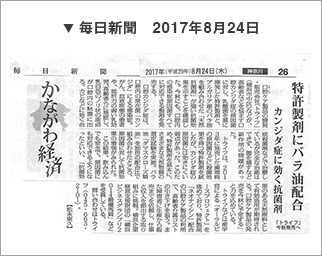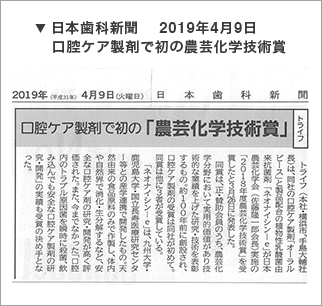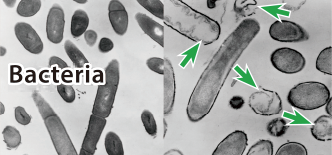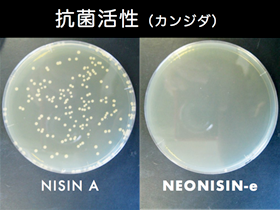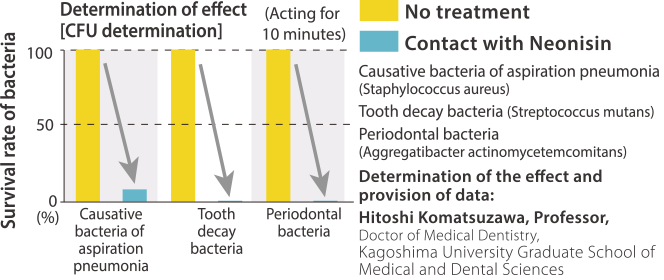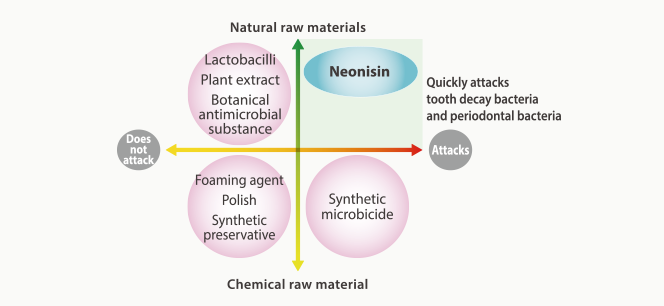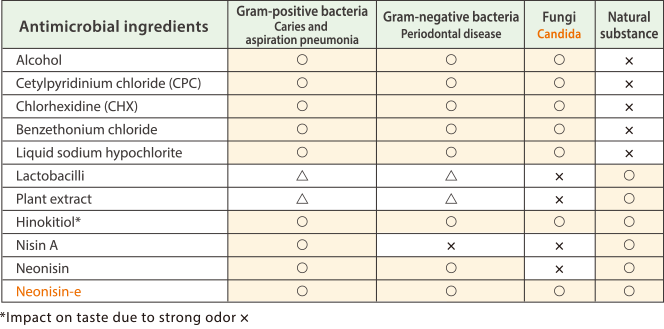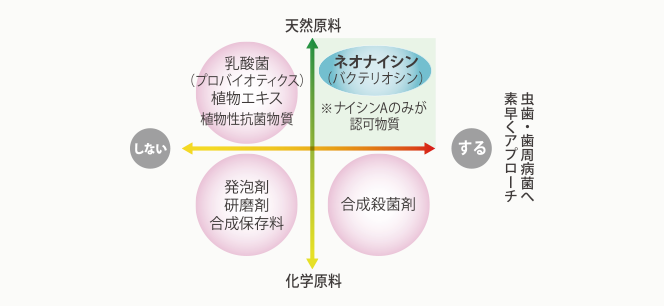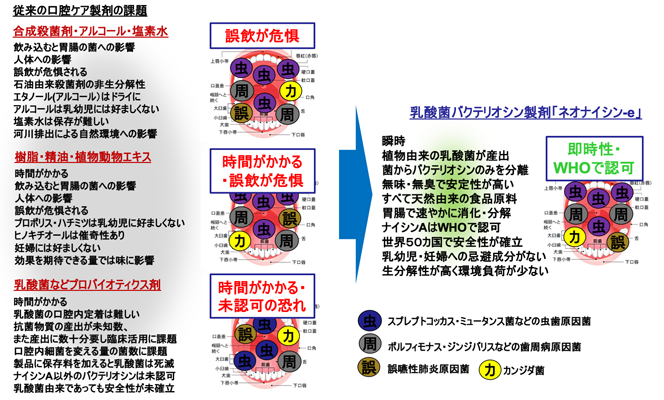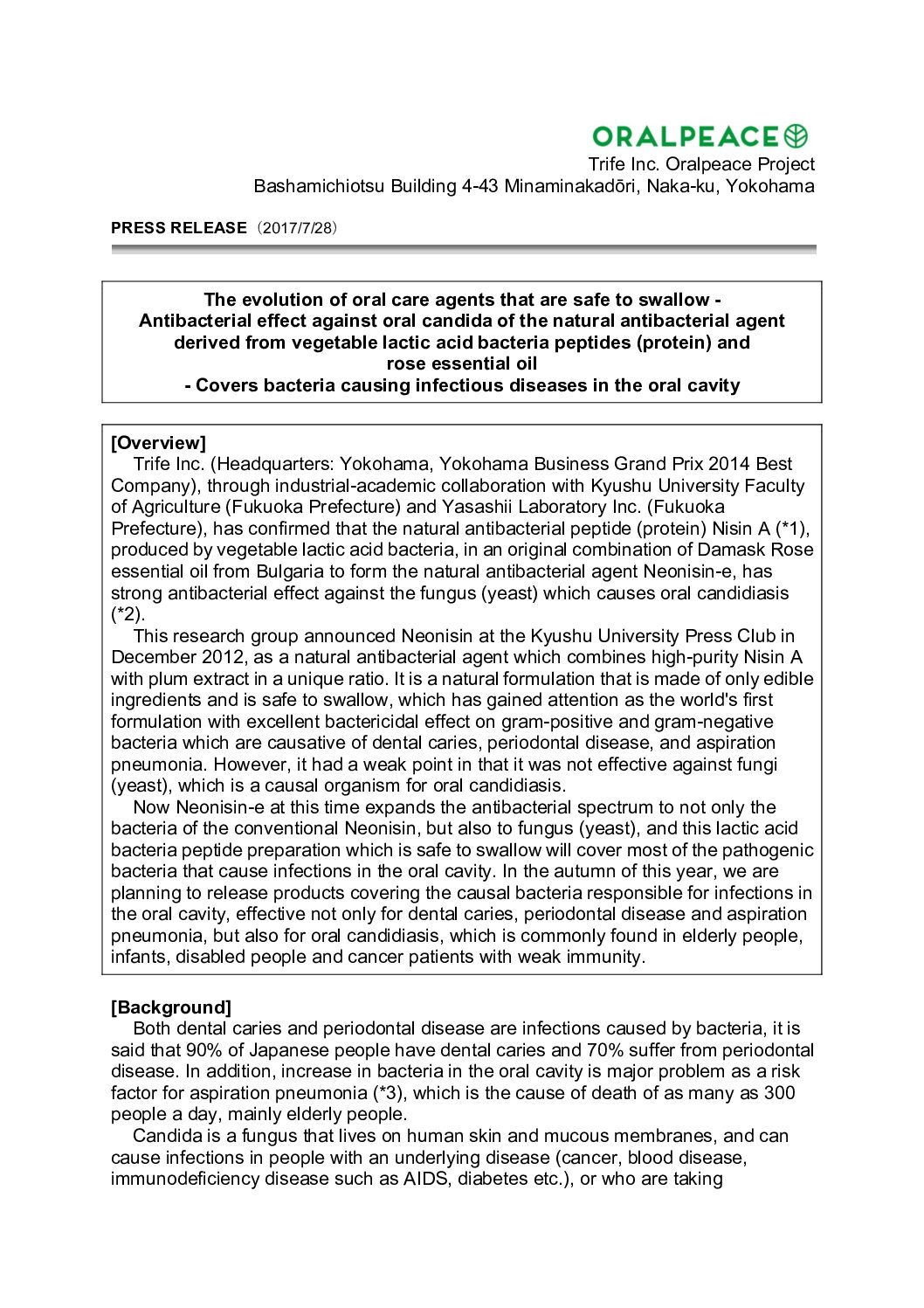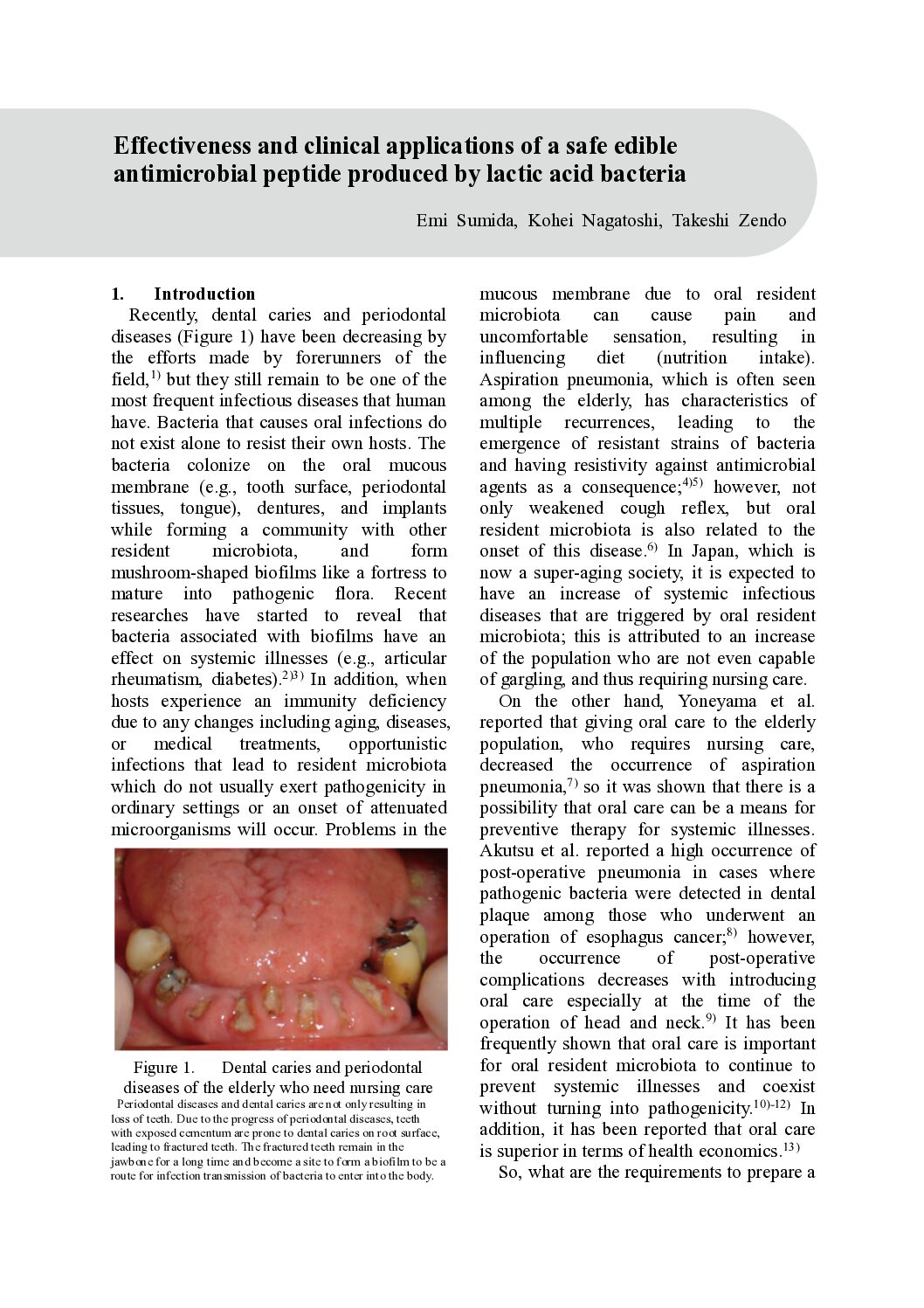Safe to swallow with excellent bactericidal power
Lactobacillus bacteriocin preparation “Neonisin®” derived from vegetable foods
“Neonisin®” was invented by Japan’s most advanced lactic acid bacterium biotechnology.This is the result of joint research with the Japanese National Research Institute, Kyushu University Graduate School of Agriculture, National Kagoshima University Graduate School of Medical and Dental Sciences, and National Longevity Medical Research Center, Department of Oral Diseases.A lactic acid bacterium bacteriocin preparation derived from plant foods that meets the demands of the new era.It is produced from the fungus found in Japanese tofu, an edible plant-derived food.”The main features are as follows. “Instantly sterilizes a wide range of bacteria that cause problems in the oral cavity at ultra-low concentrations compared to general antibacterial agents and antibiotics. On the other hand, if swallowed, it is quickly digested as an amino acid in the intestinal tract and safe for the human body. ” (Patent No. 5750552)
Neonisin-e®*, a unique ingredient to ORALPEACE
Innovative natural antibacterial agent that has both excellent bactericidal power and safety for human body
“Neonisin®” is a lactic acid bacterium bacteriocin (antimicrobial peptide) formulation derived from plant foods that meets the health needs of the new era.
The main features are as follows. “Instantly sterilizes a wide range of bacteria that cause problems in the oral cavity at ultra-low concentrations compared to general antibacterial agents and antibiotics. On the other hand, if swallowed, it is quickly digested as an amino acid in the intestinal tract and safe for the human body. ”
This is the result of joint research with the Japanese National Research Institute, Kyushu University Graduate School of Agriculture, National Kagoshima University Graduate School of Medical and Dental Sciences, and National Longevity Medical Research Center, Department of Oral Diseases.
[Long road to invention of “Neonisin®”]
The project started when Dr. Kenji Sonomoto and Dr. Kohei Nagatoshi contacted the entrepreneur Mr. Daisuke Teshima to make use of a safer natural fungicide that is kind to the body and the environment.
Dr. Kenji Sonomoto is the world leader in bacteriocin research, with more than 20 new bacteriocin discoveries and the number of discoveries in the world. He is also an emeritus professor at the National Graduate School of Agriculture, Kyushu University, which is one of the top five universities in Japan.
Dr. Kohei Nagatoshi was born to a family whose grandfather founded a dairy company 100 years ago in Kyushu. After graduating from the Faculty of Agriculture, National Hokkaido University, which is the number one university in Japan’s Faculty of Agriculture, he is a researcher who has been researching bacteriocin for about 10 years after conducting research on synthetic fungicides at a major chemical manufacturer in Tokyo.
Entrepreneur Mr. Daisuke Teshima is a pioneer in developing organic products and brands such as oral care, body care, hair care and skin care with organic certification for the first time in Japan.
And he is a social entrepreneur who has been working for 15 years to create jobs for people with disabilities through business. That’s what he started because his child was disabled.
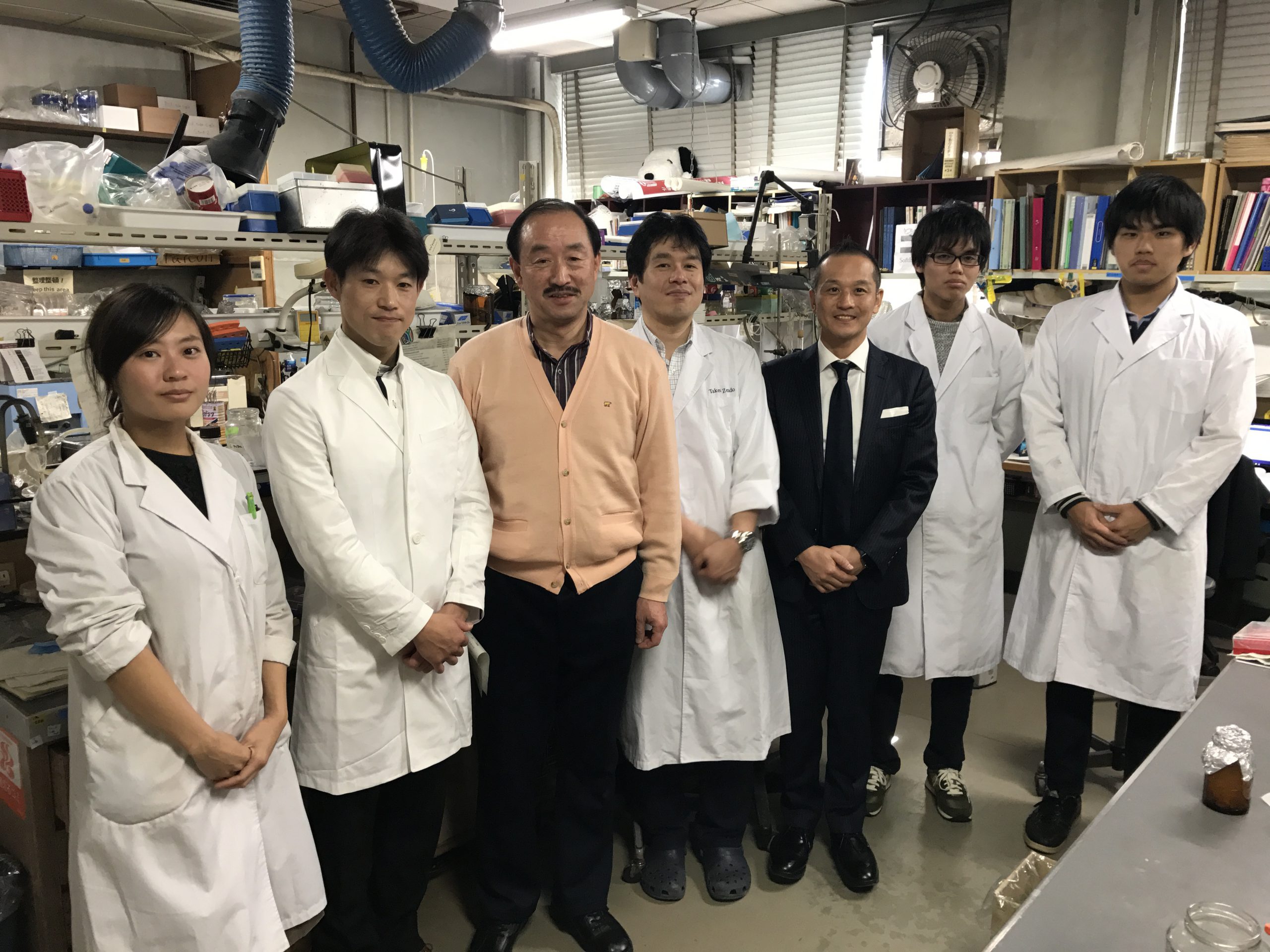
Dr. Kenji Sonomoto and Dr. Kohei Nagatoshi contacted to Mr. Daisuke Teshima in March 2011 when there was a big earthquake disaster in the north of Japan.
They wanted to utilize Bacteriocin’s “Nisin” which was produced from lactic acid bacteria found in “Tofu”, a Japanese food, which was the result of their research, as a preservative for organic cosmetics, a hygiene agent, and social contribution.
However, at that time, Mr. Teshima felt no social usefulness or marketability for their research results.
A year later, in February 2012, Mr. Teshima’s father struggled with cancer and suffered from various troubles caused by bacteria in the oral cavity due to weakened immunity due to anticancer drugs.
He swallowed a synthetic antiseptic for the oral cavity, breaking his stomach and making him even weaker. And his uncle and aunt also died consecutively from aspiration pneumonia.
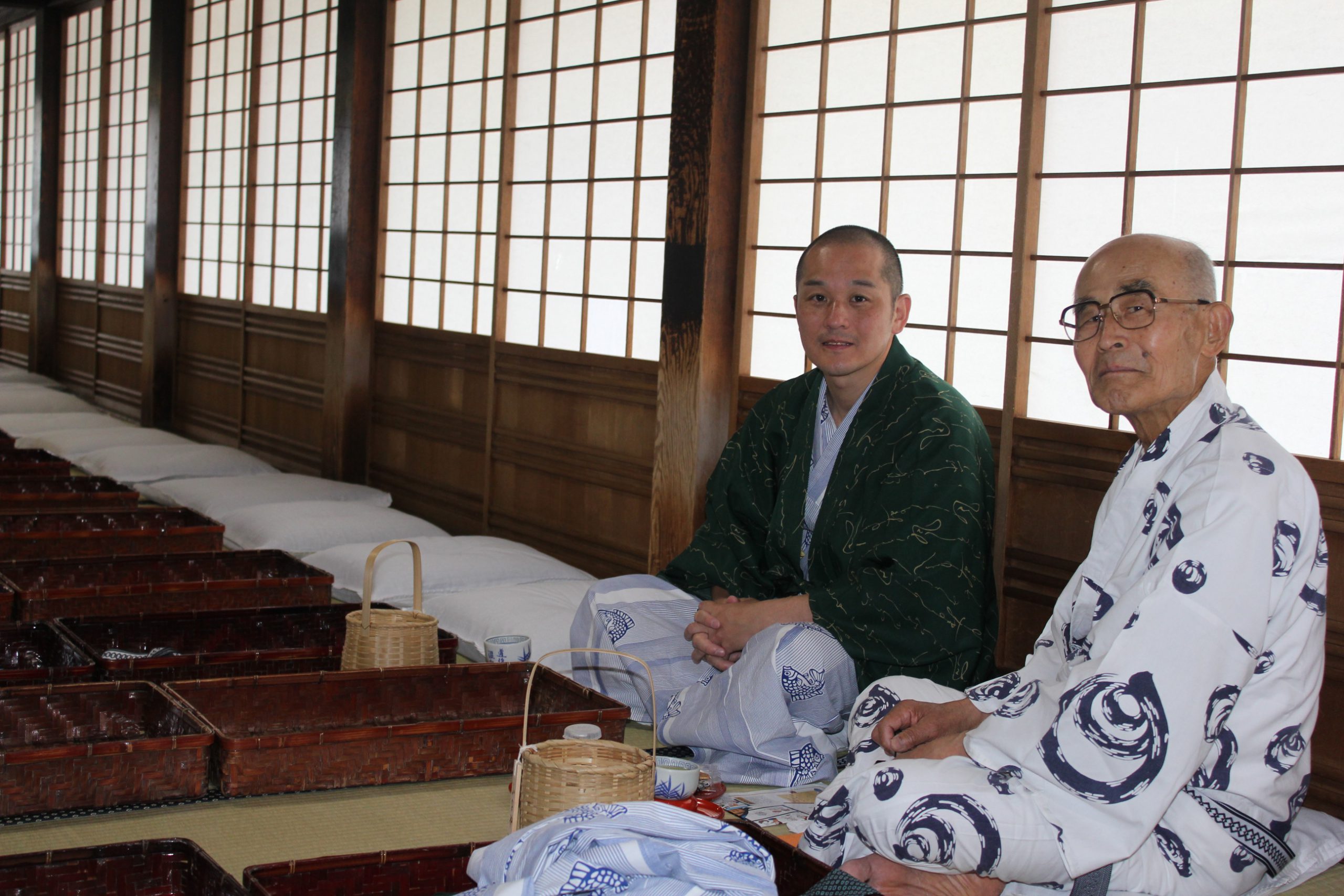
Conventional petroleum-derived synthetic bactericides and plant-concentrated antibacterial agents sterilize bacteria in the oral cavity, but they are difficult to digest if swallowed accidentally. It has the side effect of destroying your stomach.
In addition, strong disinfectants such as alcohol (ethanol), hypochlorous acid, chlorine, phenol, and cresol are suitable for cleaning and sterilizing medical equipment, desks, floors, etc. However, continuous application to sterilize bacteria in the oral cavity and skin of the human body has the side effect of causing rough skin and breaking the skin barrier.
And, antibiotics such as penicillin have contributed to the development of humankind for 100 years since their discovery, but bacteria are resistant to bacteria (MRSA, vancomycin, etc., which can be killed by human-made antibiotics). However, there was a problem in the future approach, due to the development of new antibiotics and the emergence of resistant bacteria.
Regarding lactic acid bacteria and bacteriocin (antibacterial peptide), there is a problem that many consumers do not want to use the cultivated bacteria that live in the feces of humans and animals as a product to put in the mouth or food.
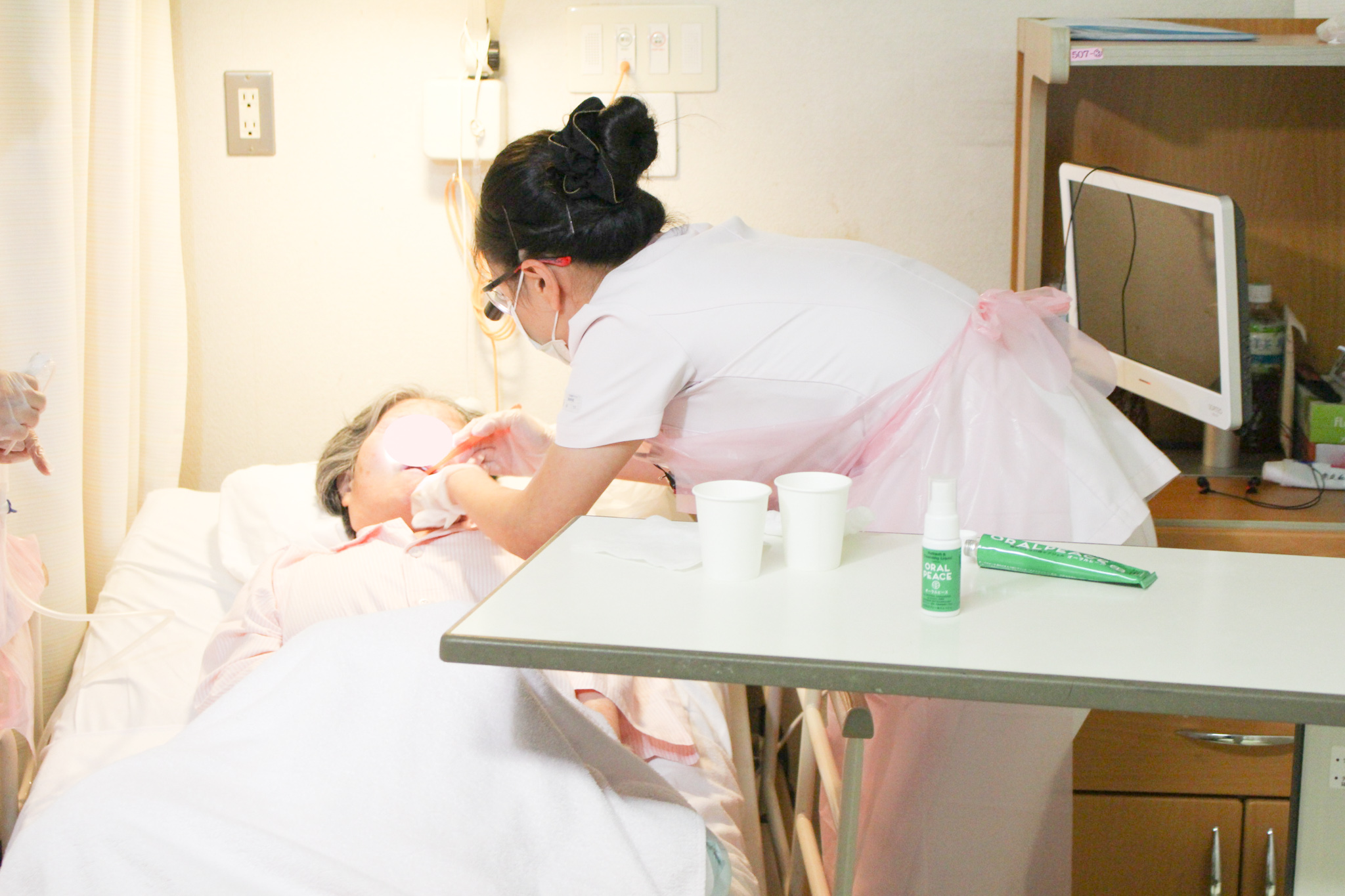
With the aging of the population, there is a need around the world to invent future antibacterial substances that are friendly to humans and the environment and solve the problems of synthetic antibacterial agents, plant-derived antibacterial agents, and antibiotics.
With the aging of the population, the number of deaths due to aspiration pneumonia, in which bacteria in the mouth enter the lungs while sleeping, exceeds 300 in a day.
From the above, we wanted to be helpful in what we can do. Then, we started to develop a natural antibacterial agent that we have never seen in the world, which has an excellent bactericidal effect against bacteria, but is safe to swallow, and that we really want to use for families.
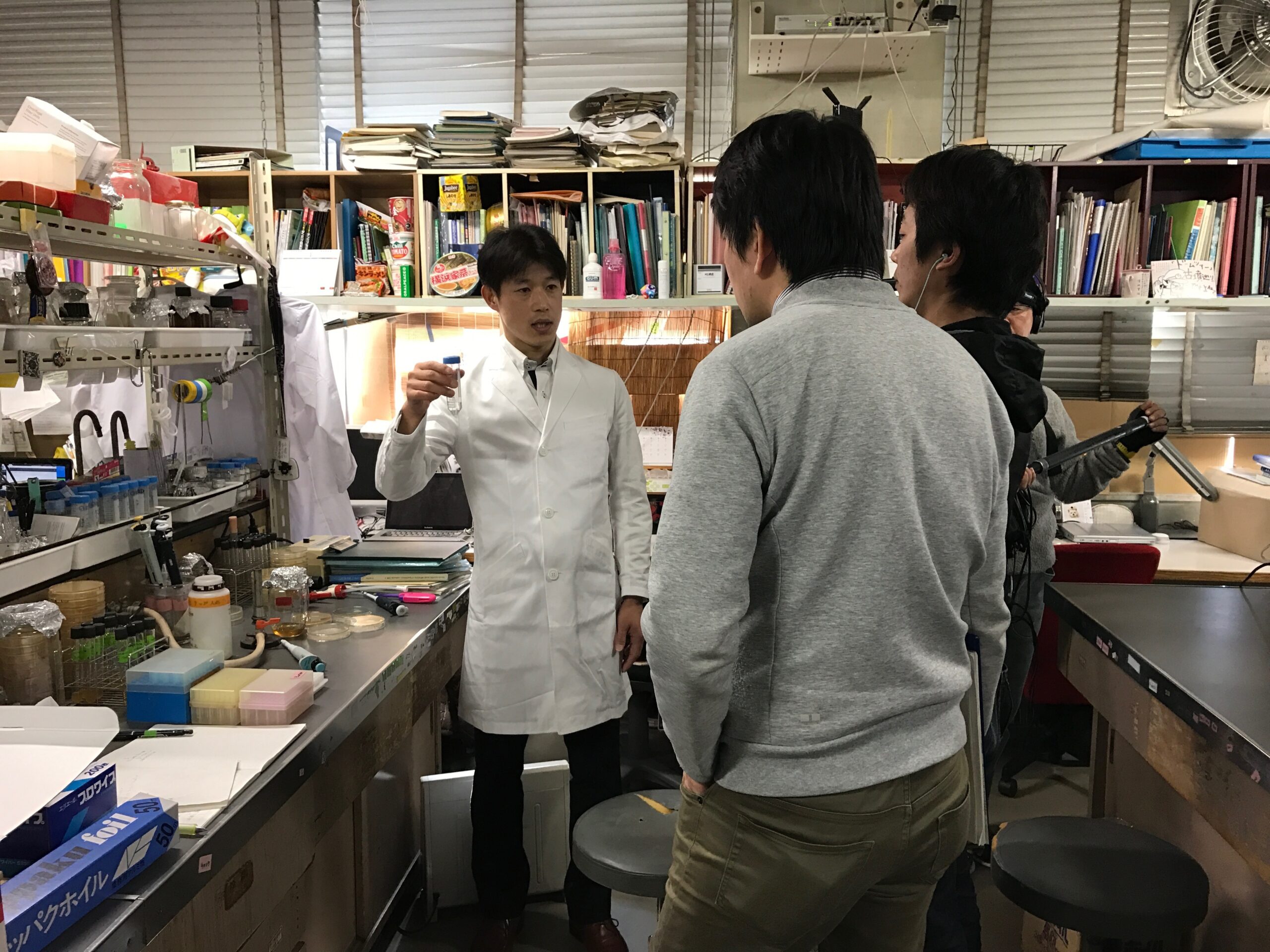
Until then, Dr. Nagatoshi admired Dr. William Smith Clark, who is famous for his words ” Boys, be ambitious. “, and went on to the Faculty of Agriculture, National Hokkaido University. Hokkaido University is the number one national university in Japan in the Faculty of Agriculture.
After graduating, he developed a food sanitizer (petroleum-based synthetic bactericide) at a major chemical manufacturer in Tokyo, and since 2000, has conducted research and development on healthcare products at a major pharmaceutical company.
From the days of researching synthetic bactericides with rubber gloves and protective glasses, he strongly felt the need for antibacterial agents that are friendly to the body and the environment.
In 2002, he learned about the lactic acid bacterium bacteriocin “Nisin” at a dairy company that his grandfather founded in 1934.And he met Professor Emeritus Kenji Sonomoto of the Faculty of Agriculture, Kyushu University, who has been studying antibacterial substances made by lactic acid bacteria for about 20 years.
Dr. Kenji Sonomoto, Professor Emeritus at the Faculty of Agriculture, Kyushu University, has discovered more than 20 new bacteriocins (antibacterial peptides). It is the number one discovery in the world and he is the world leader in bacteriocin research.
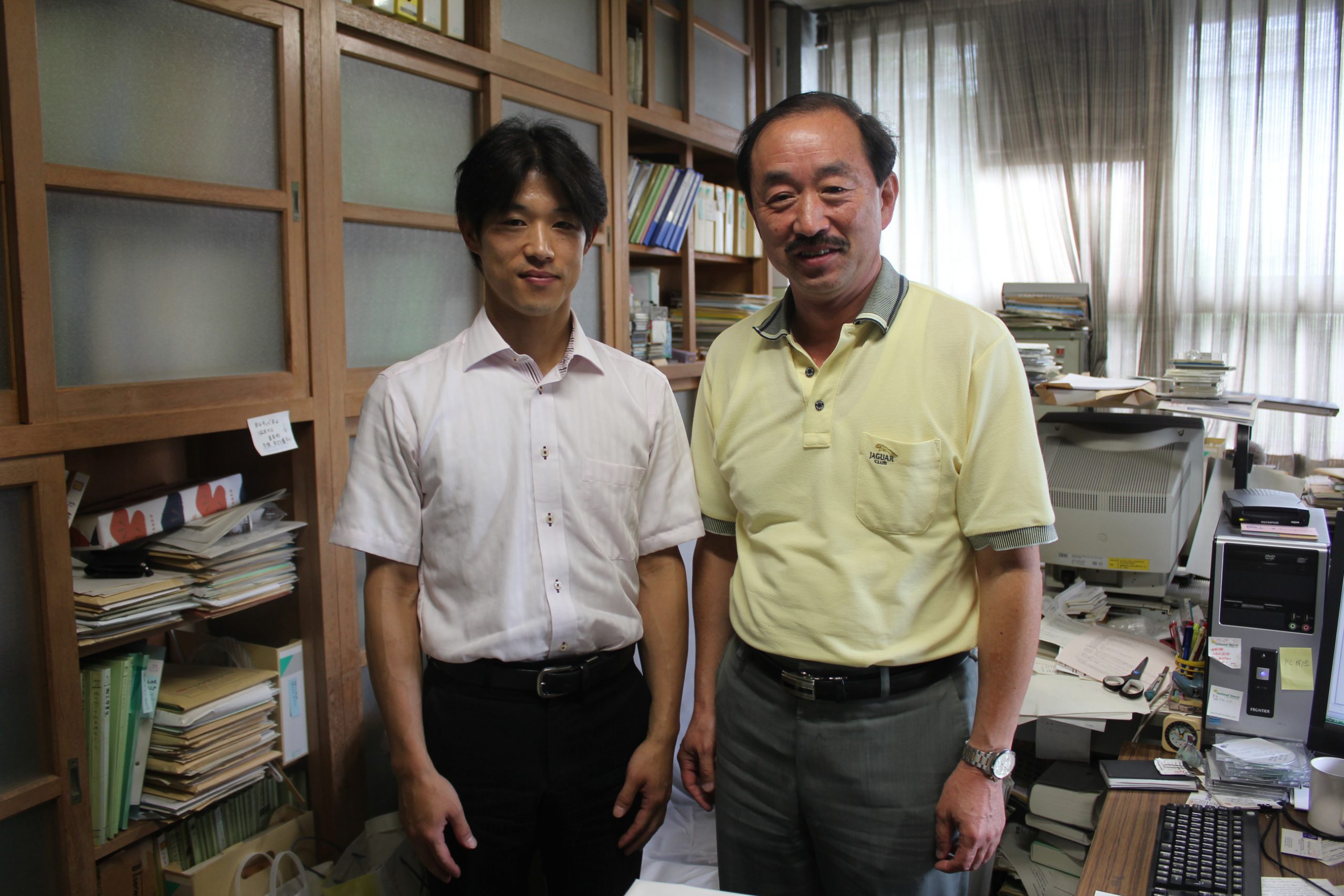
In the research of safe antibacterial agents by “Nisin”, they promoted many industry-academia-government collaborative projects in Japan and together established a bio-venture company with the lactic acid bacterium bacteriocin “Nisin A” as the core in 2007. They were looking for research and practical application of their research result, “high-purity Nisin”.
However, the bacteriocin “Nisin” found in cheese in the United Kingdom in 1928 was approved by WHO in 1969 as a safe food preservative, and since then in the United States in 1988 it was generally safe food (GRAS). Although it was certified, Japan’s Ministry of Health, Labor and Welfare did not approve it until 2009, and the door for its use in the Japanese food sector remained closed.
They sought applications outside the food sector and marketed their research results to large companies, but the large companies were unaware of their social needs and potential, and their 10-year research results remained deadly.
Therefore, Dr. Nagatoshi came up with the idea of applying it to organic cosmetics that are friendly to the body and the environment, and decided to send a message to Mr. Teshima, who had launched many organic cosmetic brands, to discuss practical application.
At that time, Mr. Teshima was looking for technologies and technologies that would contribute to the development of humankind and create jobs for people with disabilities all over the world.
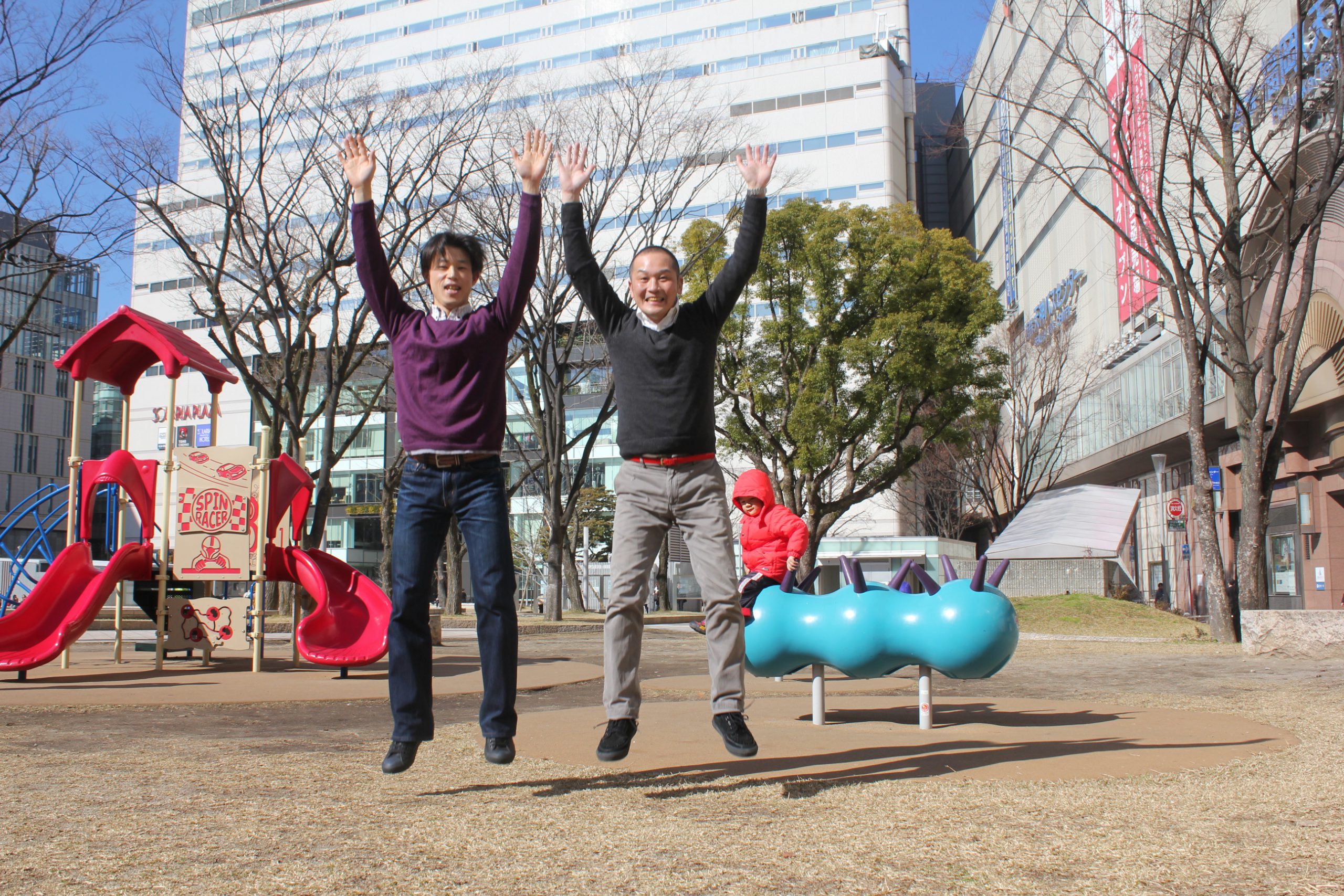
Dr. Nagatoshi was taught by his grandfather’s business, Mr. Teshima was taught by his father’s fight against illness, and they met.
The two people then came up with the project “to create oral care products that are safer to swallow than ever before and to create jobs for people with disabilities in the world.”
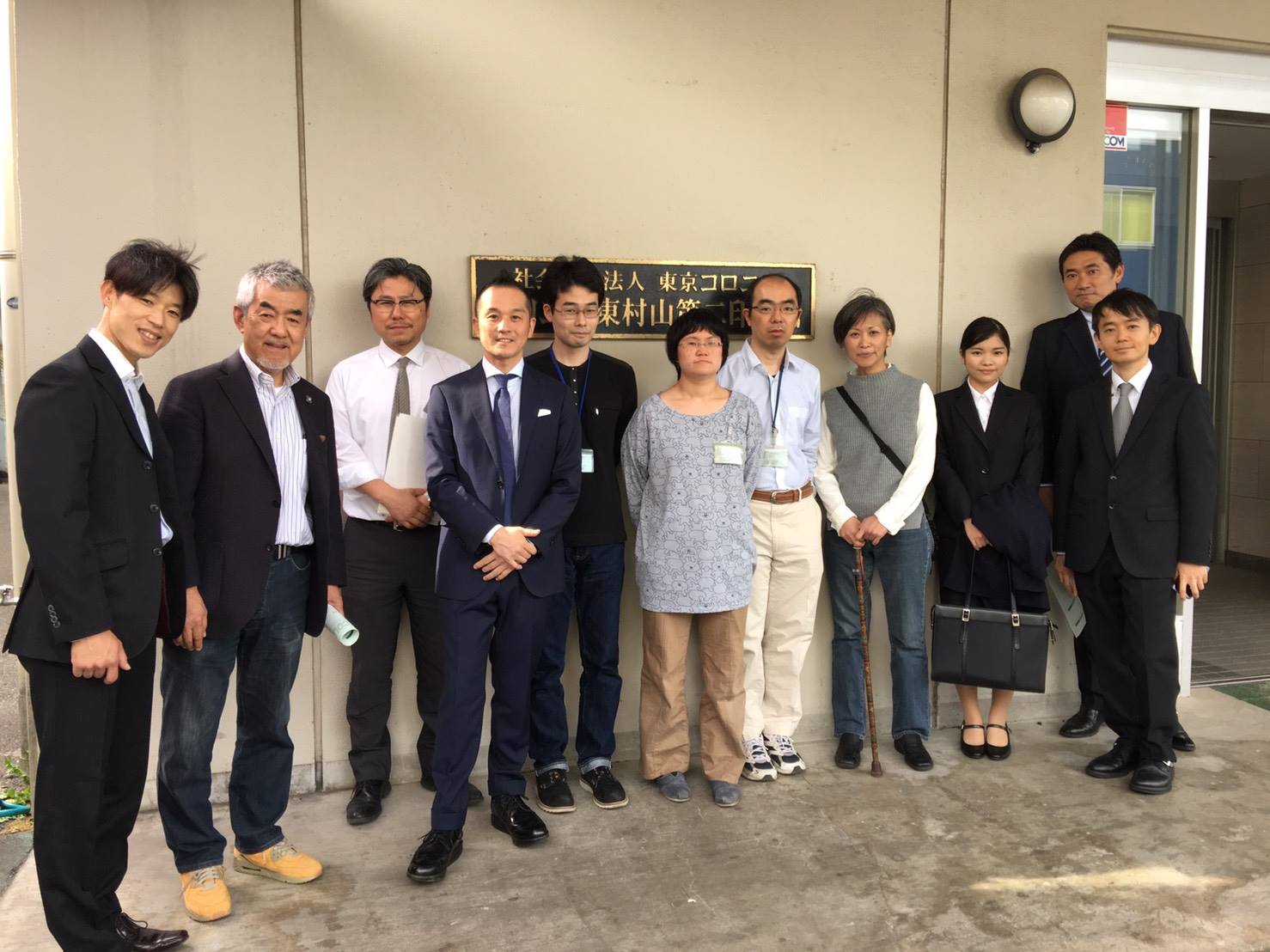
They enthusiastically conducted research and development in order to create a formulation that meets the new market needs of being “safe to swallow while having a bactericidal activity against a wide range of bacteria that cause problems for human use.”
And they succeeded in inventing a new plant-derived lactic acid bacteriocin preparation, “Neonisin®”, which has a broad antibacterial spectrum, and presented his research results at the Kyushu University Press Club.
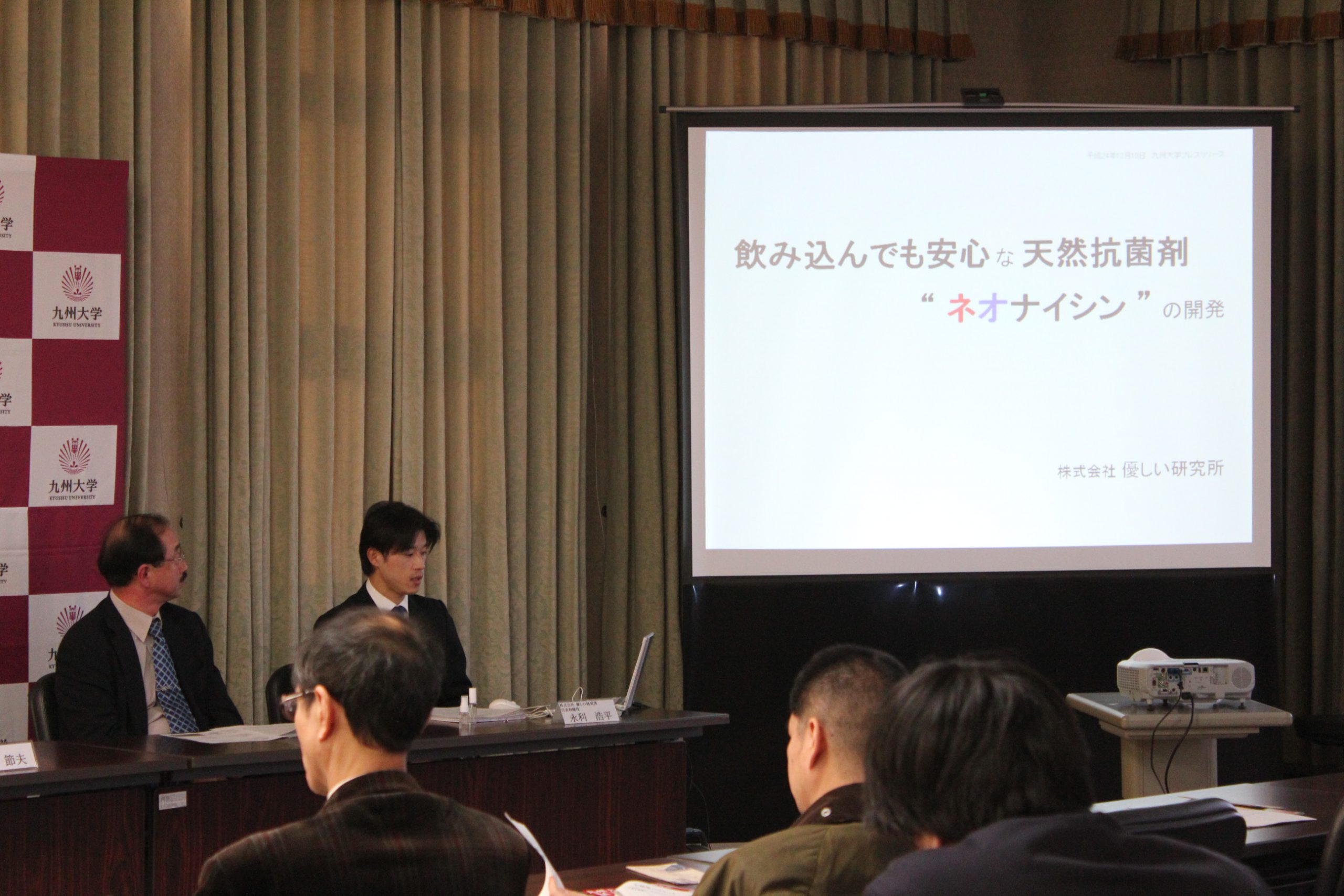
In 2016, they also succeeded in inventing the lactic acid bacteriocin preparation “Neonisin-e (evolution) ®”, which sterilizes Candida (yeast and fungi).
In recognition of their research results, they were also awarded the Japan Agricultural Chemistry Technology Award in 2019 along with their teacher, Professor Emeritus Kenji Sonomoto. And they got two patents.
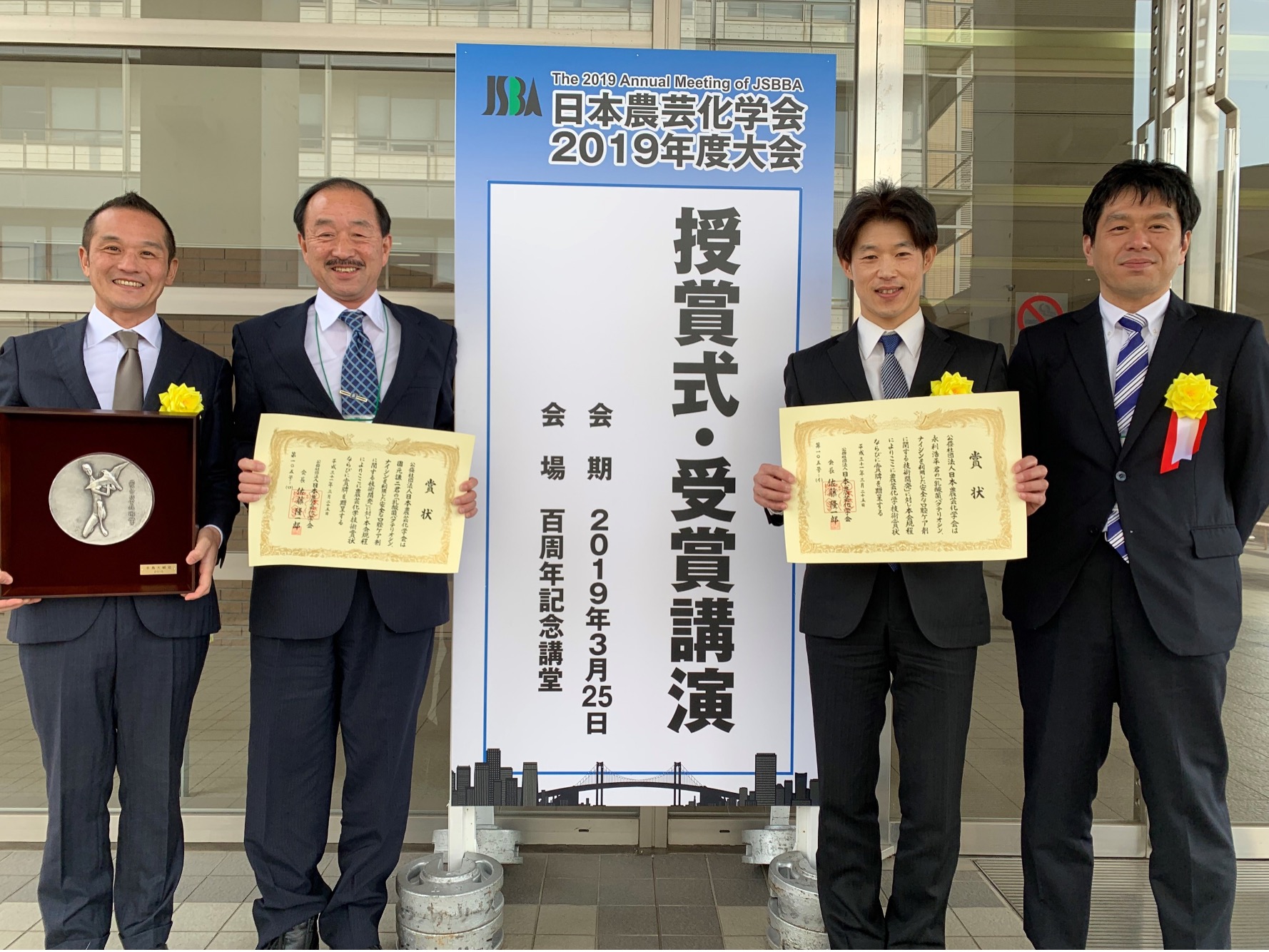
In this way, the bacteriocin preparations “Neonisin®” and “Neonisin-e®” were created in Japan over 10 years with the feeling of family and the passion of researchers.
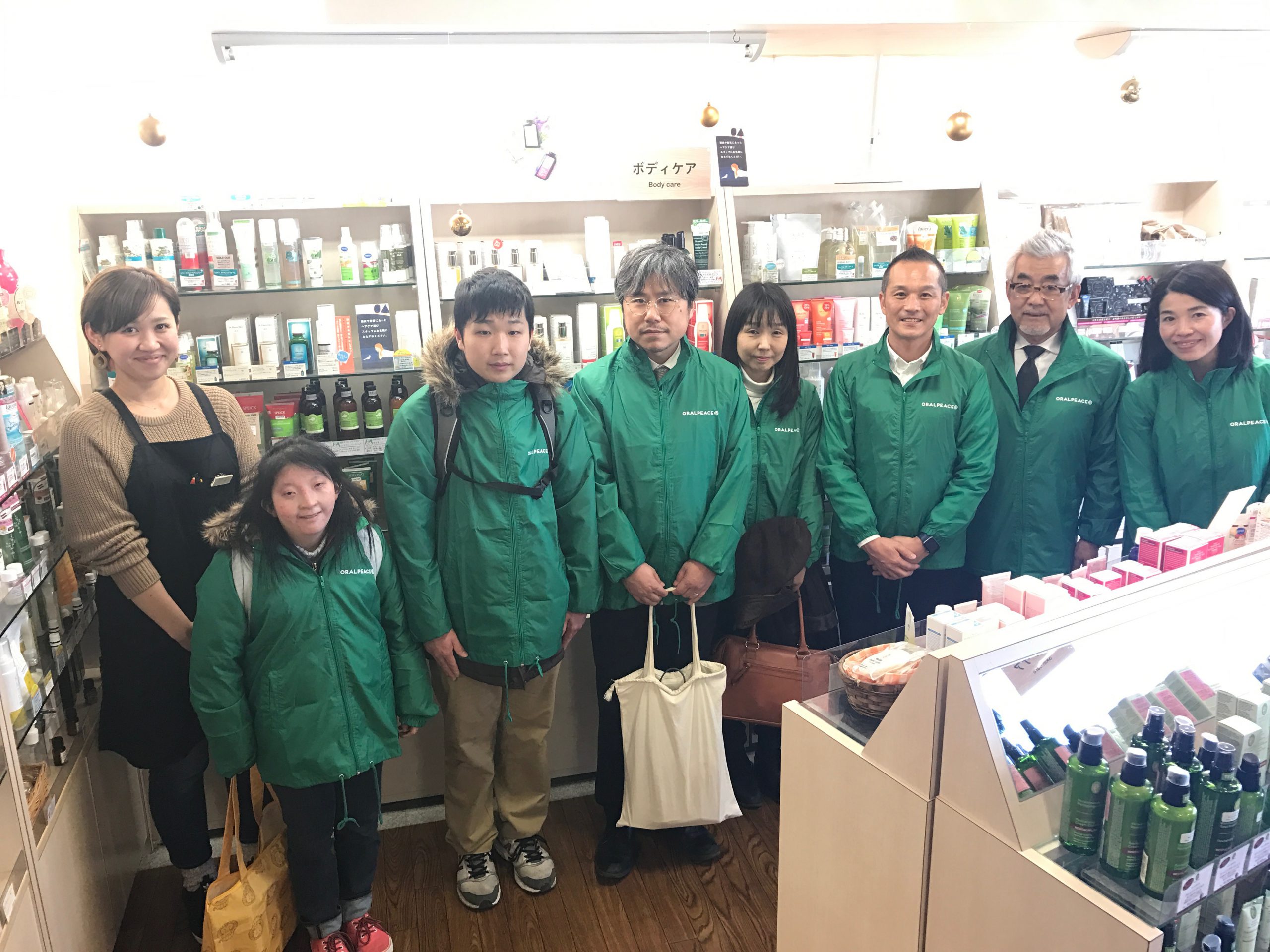
[Details of “Neonisin®” research]
“Neonisin®” is a bacteriocin (antibacterial peptide) preparation derived from plant foods.
It was developed through industry-academia collaboration with the Graduate School of Agriculture, Kyushu University, the Graduate School of Medical and Dental Sciences, Kagoshima University, Department of Oral Diseases, National Center for Longevity Medical Research.
The main features are as follows.
“It is produced from the bacteria found in” Tofu “, an edible plant-derived food in Japan. It causes a wide range of bacteria that cause a wide range of troubles in the oral cavity at an extremely low concentration compared to ordinary antibacterial agents and antibiotics. When swallowed, it is quickly digested and decomposed as an amino acid in the intestinal tract and is safe for the human body. ”
Furthermore, among the many lactic acid bacteria bacteriocins (antibacterial peptides), the biggest and only feature unique to “Nisin” is “safety.”
At present, various bacteriocins (antibacterial peptides) are found around the world. However, as a result of the WHO and FDA GRAS certification, and the Japanese Ministry of Health, Labor and Welfare’s examination of safety, only “Nisin” is approved for food. Other bacteriocins (antibacterial peptides) are unapproved substances in Japan.
In addition, regarding the bacteria used for the production of “nisin,” there was a problem that many consumers do not want to use the extract product obtained by culturing bacteria derived from human or animal feces as a product to put in the mouth or as food.
The “Nisin” we use is made by the fungus discovered by Professor Emeritus Kenji Sonomoto, “Tofu”, a Japanese food. It is one of the most excellent new lactic acid bacterium strain “Lactococcus lactis” among more than 20 new lactic acid bacterium strains he has discovered so far.
And “Neonisin®” is made by combining “high-purity Nisin” refined by our original technology and “Japanese plum extract”.
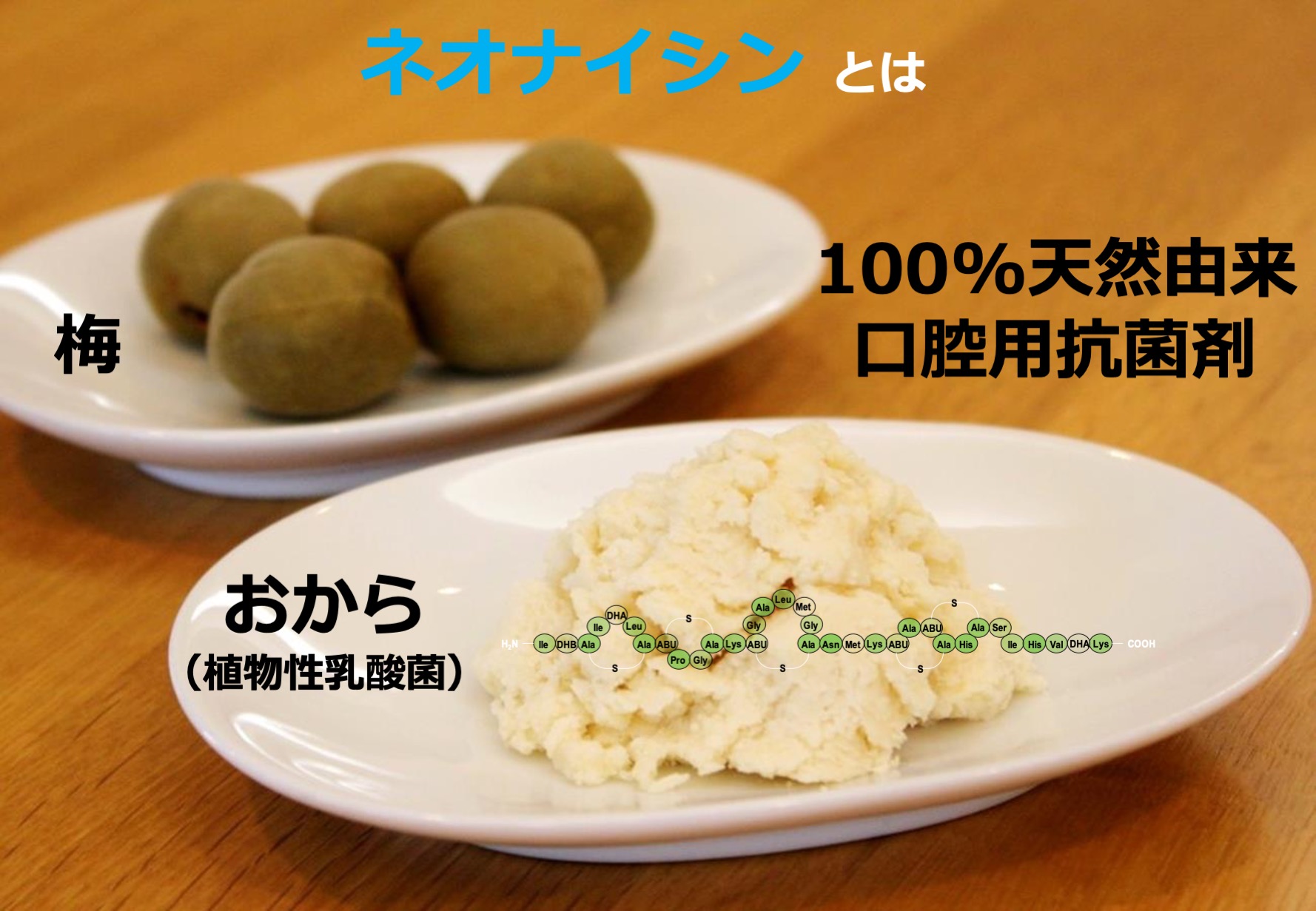
One of the ingredients, Nisin, was discovered in cheese in the 1920s in England. It is a protein naturally contained in traditional fermented foods such as yogurt, cheese, and bran pickles, and has been eaten by humankind since ancient times.
A lactic acid bacterium creates a “protein” that fights against a group of bacteria, killing and enemies enemies in order to survive. This is called “bacteriocin”. The mechanism of action is that it adsorbs to the recognition site (lipid II) of the cell membrane of the target bacterium and instantly makes a hole to sterilize it.
Another major feature of Nisin is that it exhibits high antibacterial activity even at extremely low concentrations (1 billionth of a ppb level) compared to general antibacterial agents and antibiotics.
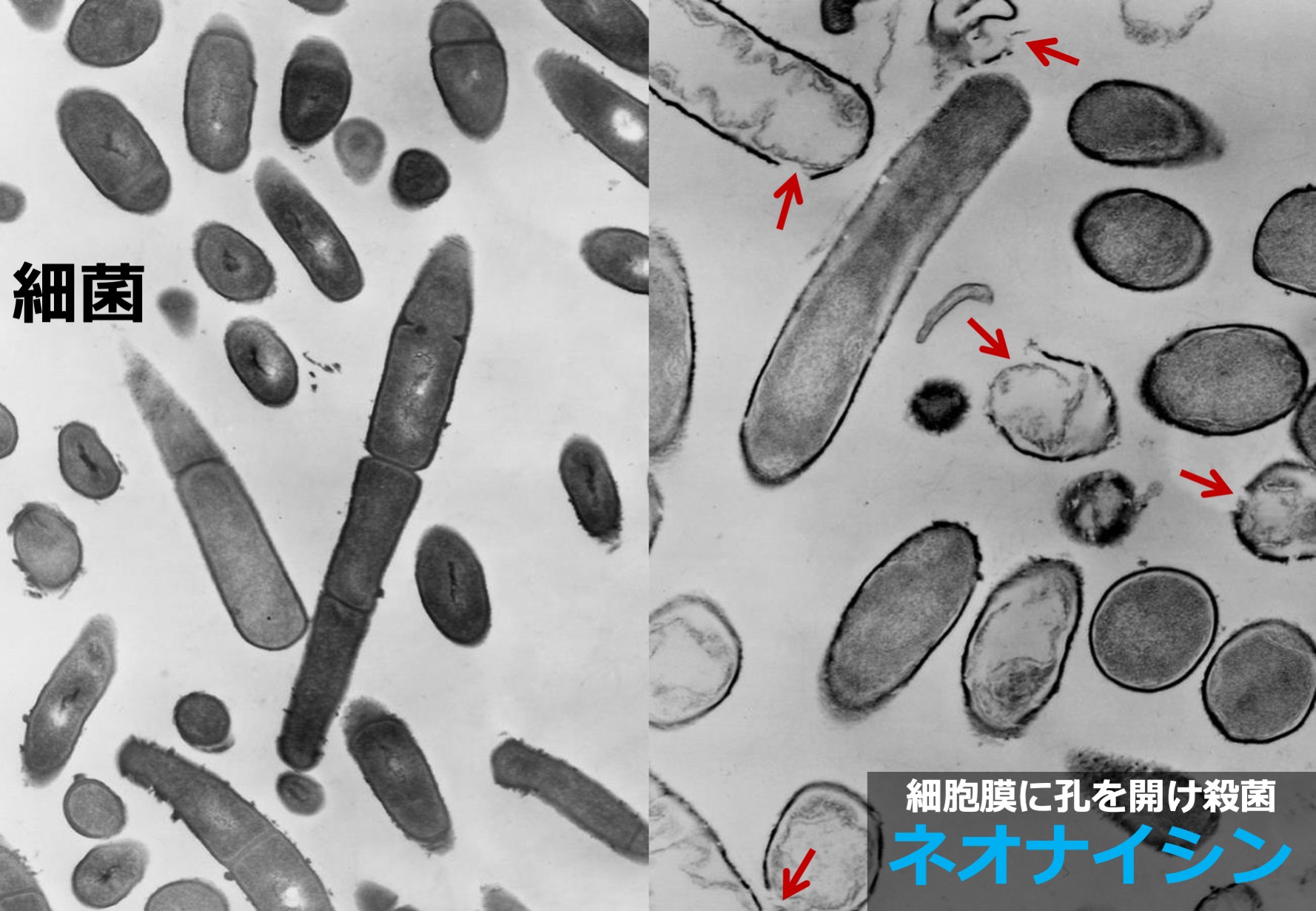
Also in the 1920s, an antibiotic (penicillin) discovered in the mold by Dr. Fleming in the United Kingdom saved many injured soldiers and injured people from infectious diseases during the war, and received the Nobel Prize in Physiology or Medicine.
After that, various derivatives (penicillin antibiotics) were developed and provided to the medical field. Antibiotics have the characteristic that they are not biodegradable, so they dissolve in blood and are useful for all bacteria throughout the body, and even if they are excreted outside the body, they do not decompose in the natural environment (hardly degradable).
On the other hand, “Nisin” has the characteristic of being digested as food (protein) when swallowed while approaching the bacteria in the mouth (weak point), and found usefulness in the medical field in the world of the last century. Until now, it has been used all over the world exclusively for food preservation. In practical use, in 1953, a British company sold the “Nisin” formulation for the first time in the world.
Nisin, a lactic acid bacterium bacteriocin, was approved by WHO and FAO in 1969 and was generally certified as a safety food (GRAS) in the United States in 1988. It is approved as a safe natural antibacterial agent in over 50 countries around the world.
In the United Kingdom, France, etc., the use amount of “Nisin” is not limited to cheese, etc., and in Japan, after being deliberated by the Ministry of Health, Labor and Welfare and the Food Safety Commission in 2009, genotoxicity tests, carcinogenicity tests, All other tests were cleared and it was recognized as a safe food.
It has now become clear that bacteria in the mouth cause aspiration pneumonia, periodontal disease, tooth decay and oral candidiasis.
“Nisin”, which has been used for food preservation for about 100 years, has the characteristic that it will be decomposed into amino acids and swallowed when swallowed while approaching bacteria in the mouth in this century (weak point so far). It will meet the needs of modern medical and nursing care settings.
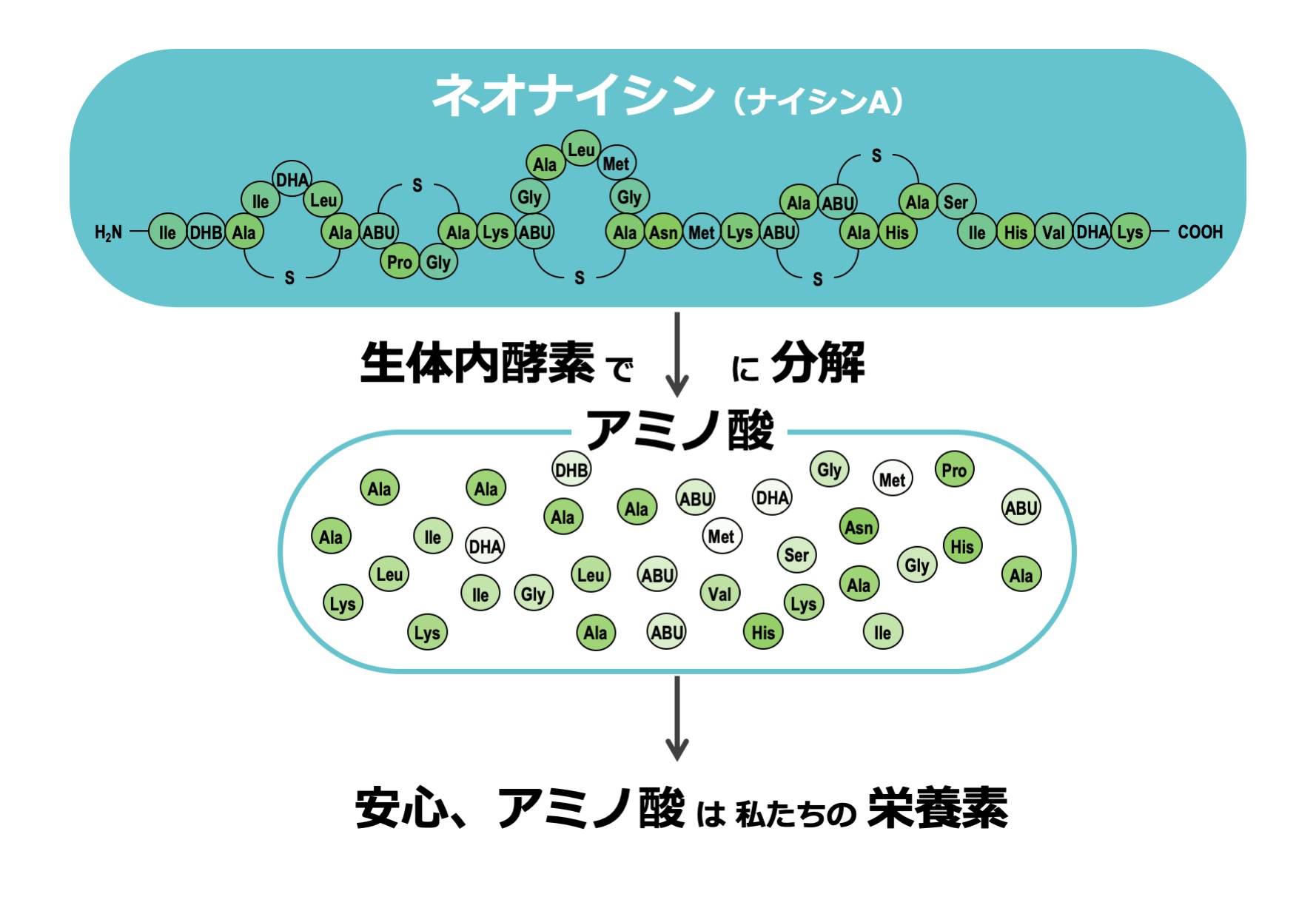
About 100 years after the discovery, “Nisin” began to attract attention for its usefulness in the healthcare field.
Its usefulness is to supplement antibiotics (due to slow action, which leads to the emergence of resistant bacteria and competition between new drug development and resistant bacteria) and chemical bactericides (which can cause stomachache if swallowed accidentally). ..
Up until now, “Nisin” has been expected to be used as a safe sanitary agent for the human body because it has the characteristics of approaching only bacteria and not affecting eukaryotic cells (human cells).
The following points can be expected for “Nisin”.
It does not produce resistant bacteria because of its immediate effect. Sterilize multidrug-resistant bacteria such as MRSA and VRE (vancomycin-resistant enterococci) that are gram-positive bacteria (resistant bacteria such as hospital-acquired bacteria against which antibiotics do not work).
However, “Nisin” kills only “Gram-positive bacteria” (only bacteria that cause tooth decay in the mouth). And, it does not sterilize periodontal bacteria, aspiration pneumonia-causing bacteria, “gram-negative bacteria” that cause bad breath, and “candida (yeast / fungus)”.
Currently, while the morbidity of caries is decreasing, periodontal disease, aspiration pneumonia, oral candida, etc. are increasing as the population ages. There was a need for antibacterial agents that comprehensively sterilize “negative bacteria” and “Candida bacteria”.
And general “Nisin” has low stability and is easily decomposed, and it has a lot of salt and becomes cloudy and has an odor. Because it is like salty and cloudy soup, its use was limited to natural preservatives for foods such as ham, sausage, and cheese that use salt.
If we use the amount we can expect as an oral care formulation, it will have an impact on taste and odor, and very little or “Nisin” alone will have problems in its function and stability.
Therefore, through a Japanese industry-academia-government research project, we have focused our efforts on developing our own separation and purification technology, aiming for “Nisin A” of a quality (taste, odor, stability) that you will not notice if you put it in your mouth, for over 10 years. Through the research and development of, we were able to invent highly purified “high-purity Nisin A” which is highly pure, salt-free, liquid, highly soluble and highly stable.
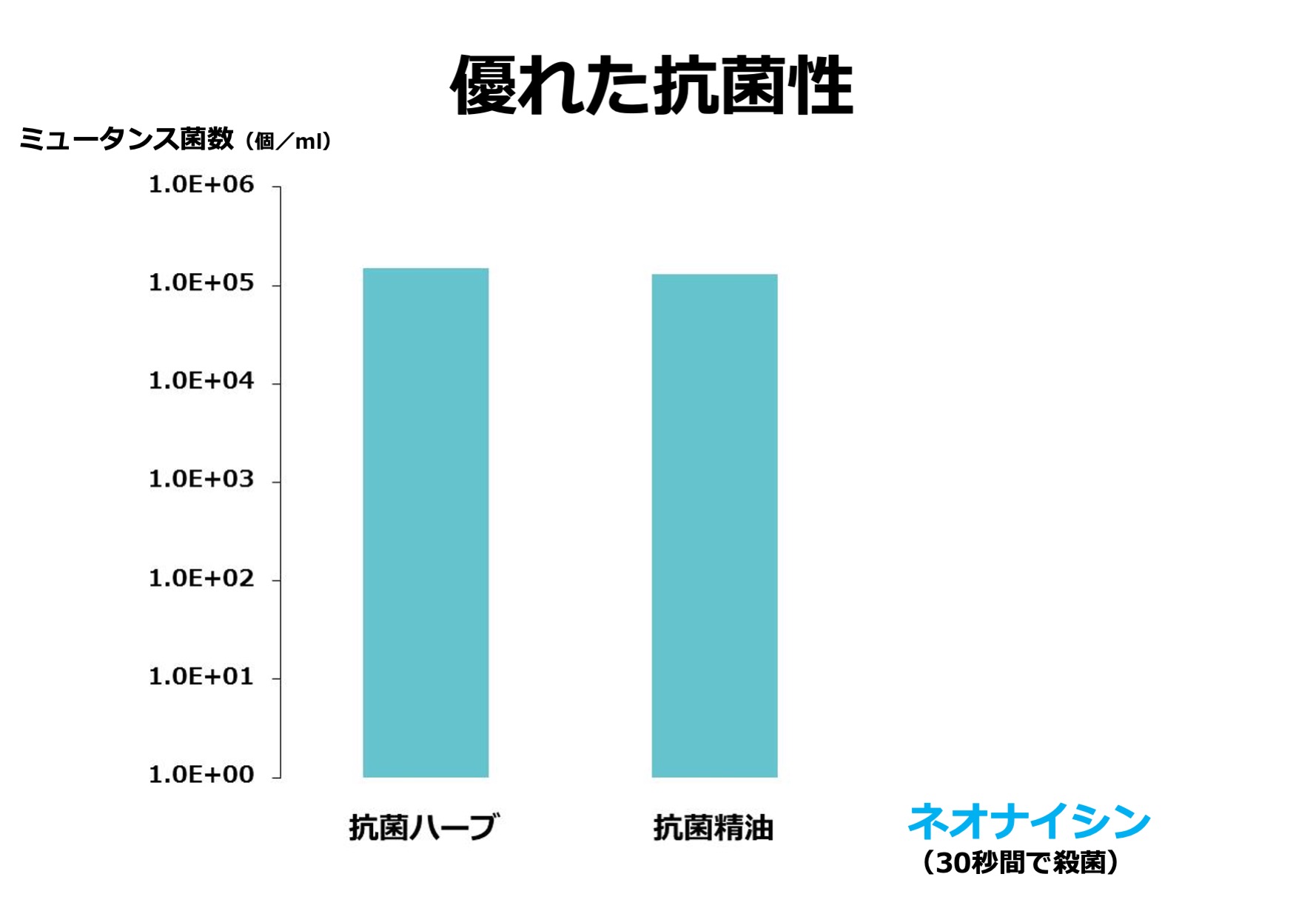
In addition, we have overcome the weak points of Nisin by combining “High Purity Nisin” with “Japanese Plum Extract” at a unique mixing ratio. And we have an broad spectrum of antibacterial spectrum from Gram-positive bacteria to Gram-negative bacteria, and permeate and sterilize into biofilms (plaques, dental plaque, lumps of bacteria), ideal plants for oral care. We invented “Neonisin®”, a lactic acid bacterium bacteriocin preparation derived from natural foods.
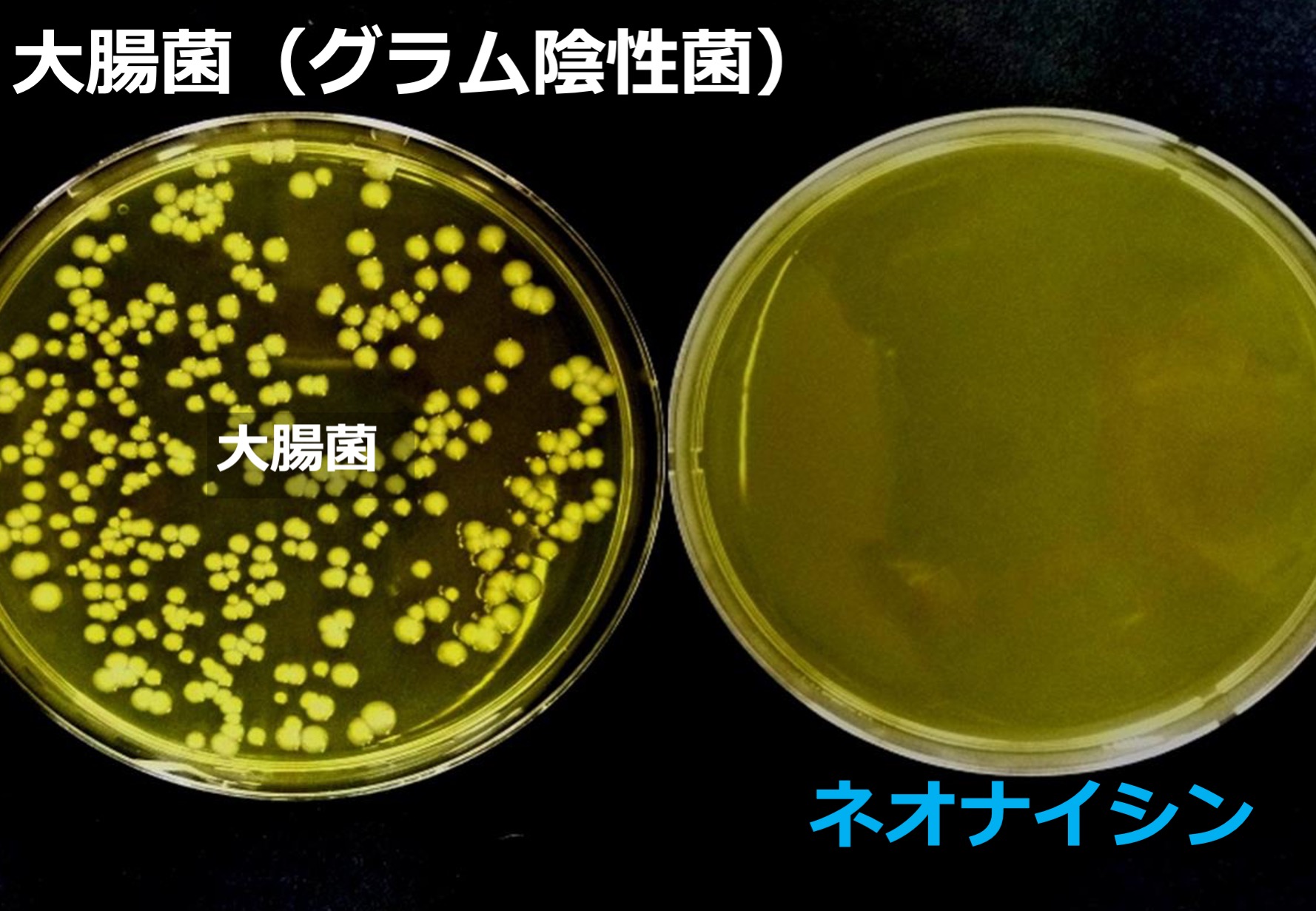
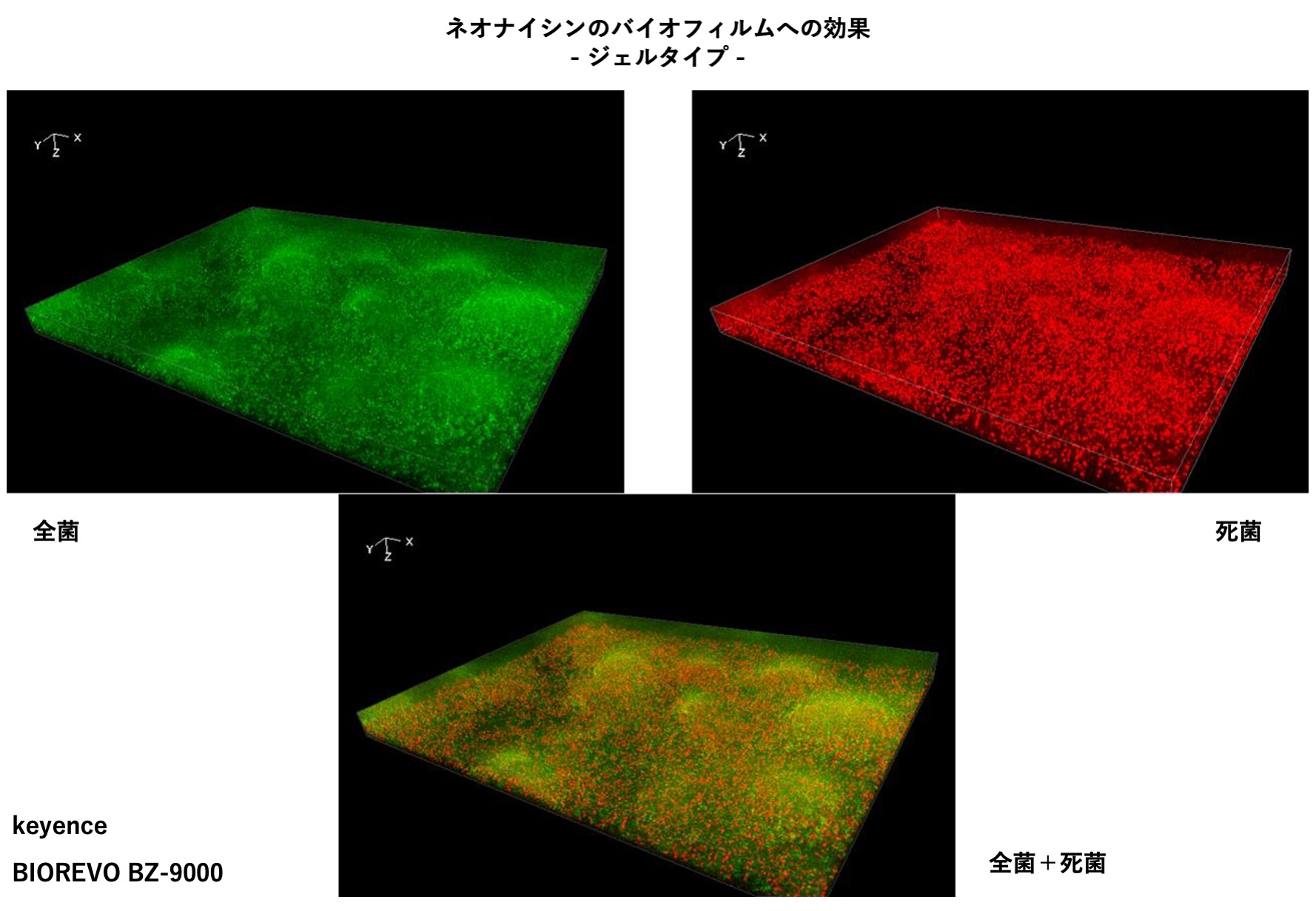
[Japan’s biotechnology technology “Neonisin®” required in a new era]
Furthermore, as global climate change and global environmental destruction progress, “Neonisin®︎” is attracting more and more attention in the world as a natural antibacterial material.
It has a high “biodegradability”, which is another excellent feature that conventional synthetic fungicides and antibiotics do not have.
The excellent biodegradability is likely to play a major role in the future application of “Neonisin®”.
Since the decomposed product of “Neonisin®” is a substance found in nature such as amino acids and small peptides (combined with several amino acids), it quickly metabolizes in the natural ecosystem after finishing its intended antibacterial role. It has the characteristics that the environmental impact and the risk of pollution are extremely low.
It is truly an environmentally friendly natural antibacterial agent.
On the other hand, petroleum-derived synthetic bactericides, antibiotics, and concentrated plant antibacterial agents have the characteristic of being “hard to decompose”, and even if they are decomposed, the decomposed products are toxic in nature.
Since its toxic effect is strong and long-lasting, it is feared that it will adversely affect the natural ecosystem, especially the microbial ecosystem.
Recently, the problem that persistent plastic waste is adversely affecting the marine ecosystem has become a hot topic all over the world, such as switching to plastics with good biodegradability and replacing containers with less risk of environmental pollution. , Interest in raw materials with excellent biodegradability that are in harmony with the environment is increasing worldwide.
These directions of the world will not reverse, and in the future, new antibacterial agents that are kind to the earth, highly sustainable, and beneficial to humankind will replace the mainstream of the world.
In addition, “Neonisin®” is not made from petroleum, which is a limited fossil raw material, but is a highly sustainable material with low environmental impact, such as lactic acid bacteria living in plant-derived Tofu and a small amount of edible plants. There is also a feature that can be made from.
Against this background, in order to leave a beautiful earth for the next generation, “Neonisin®︎” is expected to be applied in various fields in the future as a new environmentally friendly natural antibacterial agent.
“Nisin”, which was discovered about 100 years ago in the United Kingdom, became the world’s aging country 100 years later. New uses have been found.
In 2013, it was the first time in the world to open the way to the medical and healthcare applications of bacteriocin.
* Cleaning aid
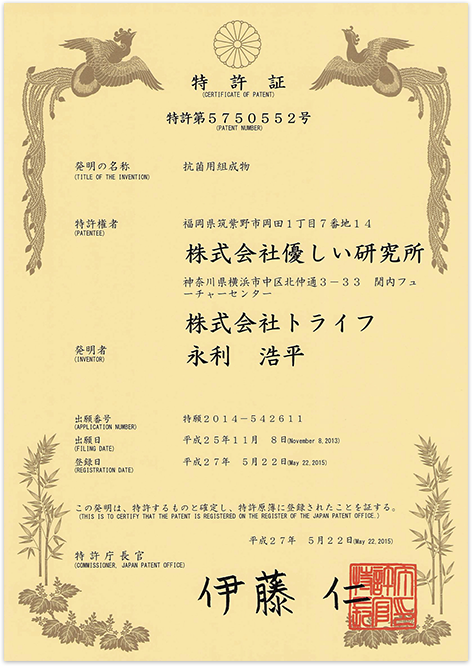
Neonisin® media information
The research results of Neonisin were announced at the Kyushu University Press Club on December 19, 2012 and featured in many media. Other videos and articles can be viewed online.
“Neonisin® effect experiment movie to oral bacteria”
Neonisin® was born from such a voice
“I accidentally swallowed an oral care agent and broke my stomach.”
“My mouth is rough and my oral care agent is soaking.”
“I want a care product that can be used with confidence because it is used daily.”
Features
And to Neonisin-e® that also supports oral candida
Evolution of “Neonisin®”, a lactic acid bacteriocin preparation that is safe to swallow Based on plant-derived lactic acid bacteriocin (antimicrobial peptide) and rose essential oil Effect of Candida on natural antibacterial agent “Neonisin-e (evolution) ®” ~ Coverage of infectious disease-causing bacteria
Candida is an indigenous bacterium that inhabits human skin and mucous membranes, and causes infection in people with some underlying diseases, who are being treated with immunosuppressants and antibacterial agents, and infants and the elderly who have poor resistance. ..
Especially in elderly people, oral candida (*), which has a white tongue surface covered with white mold, has become a problem.
Oral Candida treatments have usually been used with oral care and antifungal agents (strong synthetic fungicides that kill molds).
However, oral care alone cannot sterilize and cure oral Candida once it develops, and the use of antifungal drugs has the problem of resistant bacteria and side effects (stomach etc.), so it is safe and effective even if swallowed. There has been a worldwide demand for new therapeutic agents with high levels of efficacy.
Neonisin-e® development
Neonisin® has an excellent effect against bacteria such as Gram-positive bacteria and Gram-negative bacteria, but has a weakness that it is difficult to act against fungi (yeast).
Therefore, as a result of conducting selection tests of various natural substances in order to supplement this weakness of Neonisin®, we found a synergistic effect with “Neonisin®” on a small amount of “Damask rose essential oil” for yeast.
It has been said that “Damask rose essential oil” has an antibacterial effect, but it required a certain concentration, and it was hardly effective when used in trace amounts.
However, the effect of the lactic acid bacterium peptide preparation “Neonisin-e®”, which is a combination of “high-purity nisin” and a small amount of “Damask rose essential oil” in a unique mixing ratio, was observed.
“Neonisin-e®” is an advanced version of the conventional “Neonisin®”. With this, lactobacillus antibacterial peptide preparations that are safe to swallow will cover most infection-causing bacteria in the oral cavity.
Bulgarian Damask rose
Features of Neonisin-e®
※”Oral candidiasis”
Oral candidiasis is an infection caused by an opportunistic infection of Candida, which is a resident bacterium in the oral cavity. Onset of milky white mossy spots on the mucous membranes is caused by some underlying diseases, systemic factors such as weakly resistant infants and the elderly, who are being treated with immunosuppressants and antibacterial drugs. The treatment of oral Candida has usually involved oral care and the use of antifungal agents, powerful synthetic fungicides that kill mold. However, oral care alone cannot sterilize and cure oral Candida once it develops, and the use of antifungal drugs has the problem of resistant bacteria and side effects (stomach etc.), so it is safe and effective even if swallowed. There has been a worldwide demand for new therapeutic agents with high levels of efficacy.
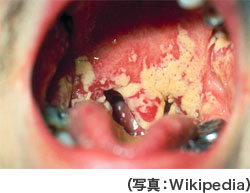
※”Candida albicans”
Candida albicans is a type of yeast that causes oral candida. Originally, it is an opportunistic infection that inhabits the human body surface, digestive tract, and vaginal mucosa, and causes lesions when the physical condition becomes poor.

